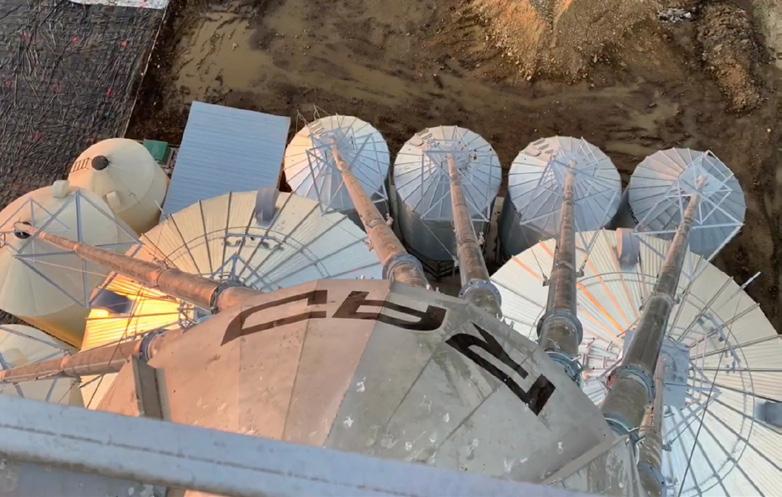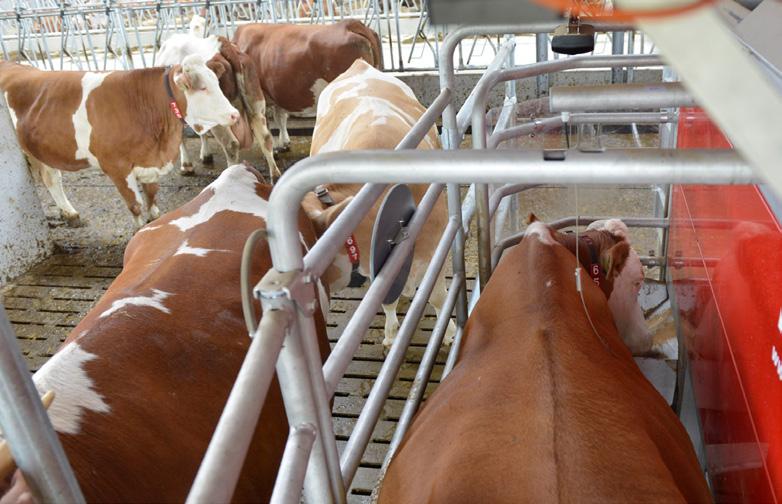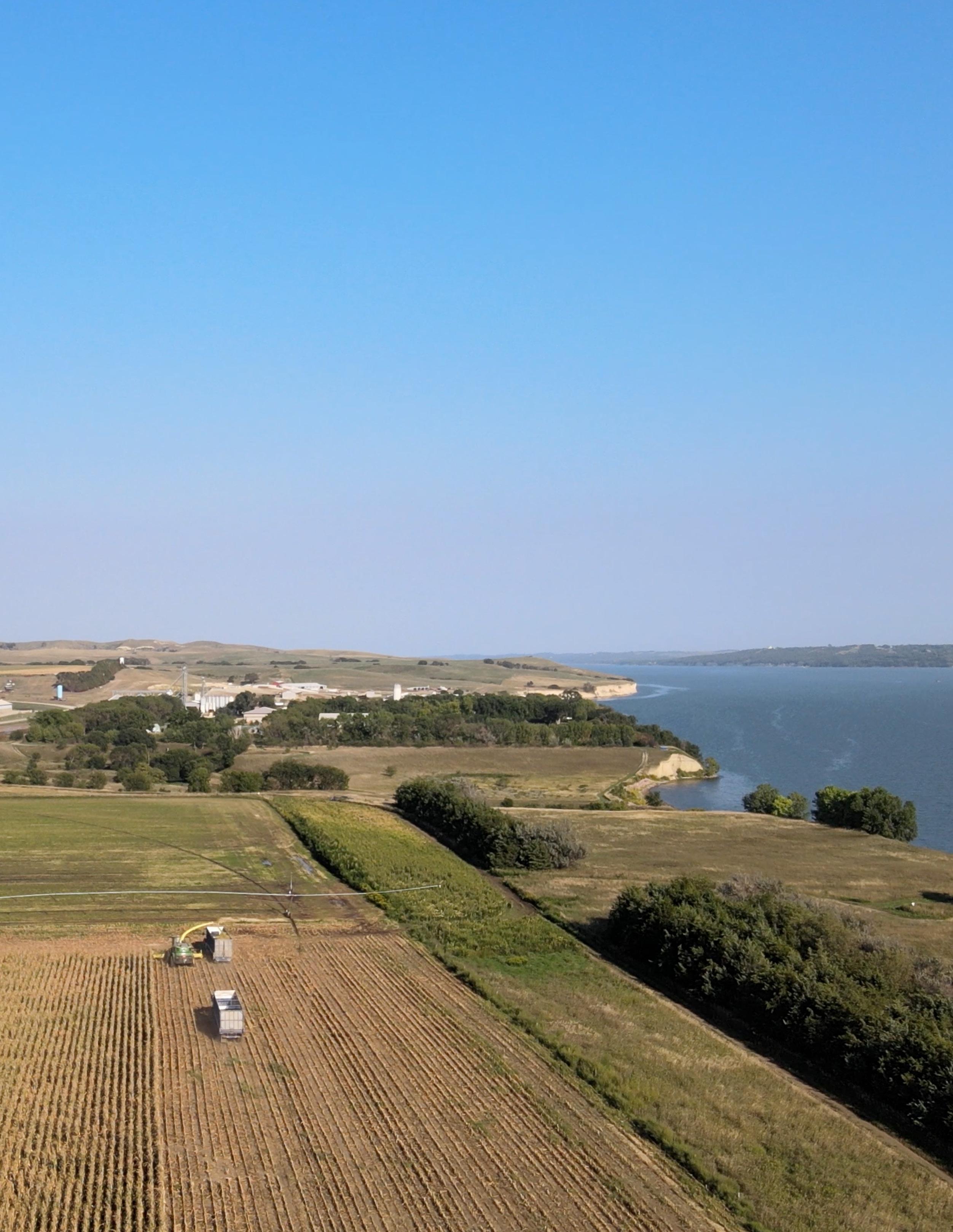

FROM THE EDITORS
TIM KURBIS


The Times They Are A-Changin’ – Bob Dylan
As I sit here, proofing the latest edition of The Modern Producer, I seem to have that song playing in my head and with good reason I believe. This, our 9th edition, may carry the same name and heritage as the first offering from New Standard, but in so many ways, things are different. New Standard is now part of a great family of companies under AgriHub. Our products, people and knowledge base has grown to cover every aspect of food production common to North America. The one thing that hasn’t changed is our goal of bringing you, the producer, the most relevant and timely information we can. I trust you will enjoy what we have for you this time. As always, we welcome feedback and ideas for how we can serve you better.
KEVIN KURBIS
Each time we work on another edition of the Modern Producer I see how it continues to evolve and grow, and I hope we are also fulfilling our original goal of providing a quality publication that has good information and value for the people reading it. This parallels the growth and change we have seen in our business, where we also strive to maintain connection to our roots and remember where we started. The feedback we receive on this publication helps keep us pointed in the right direction, so I encourage you to reach out to us with any thoughts or ideas you may have for us to make this even better. Thank you to each and every one of you for your support.
ASHLEY GRAYE
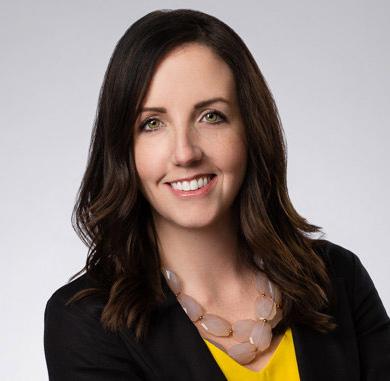
While this isn’t my first rodeo, it is only my second! Being the ‘newbie’ to the Modern Producer crew was slightly intimidating at first. Between the stories of our farming partners, and the knowledge of our service techs and sales reps via articles, trying to do these stories justice seemed like a daunting task. But, sure enough, the farms, colonies, and other editors of the Modern Producer all welcomed this city-gal-turned-dairy-farmers-wife with open arms. I’m beyond honored to be considered part of this team. The passion for sharing these agricultural stories with each of you is unmatched! Thank you for reading, we hope you find something (or many things) to enjoy in this edition.
JAKE PETERSON
Greetings! I cannot believe we are on the 9th edition and wrapping up our 5th year publishing the Modern Producer Magazine. Like always, we’ve worked hard on packing this issue with relevant producer topics and inspiring human interest articles. We are working to grow the Modern Producer into a publication that touches every aspect of the farm, from animal husbandry to finances and farm safety. We’re excited to share our team’s knowledge and insights. We always look forward to your comments and feedback. This has been a fun issue to create; we hope you enjoy reading it. Have a great winter, and see you next summer!

PRODUCER HIGHLIGHT
BRILMAN DAIRY
PARK LAKE, ALBERTA CANADA
By Ashley GrayeJames Brilman of Park Lake, AB is a modest, hard working family man, who owns Brilman Dairy with his wife, Deanna. He also happens to be one of our top producing Dairy Farming Partners. On top of it all, he’s a new entrant dairy farm with Alberta Milk.
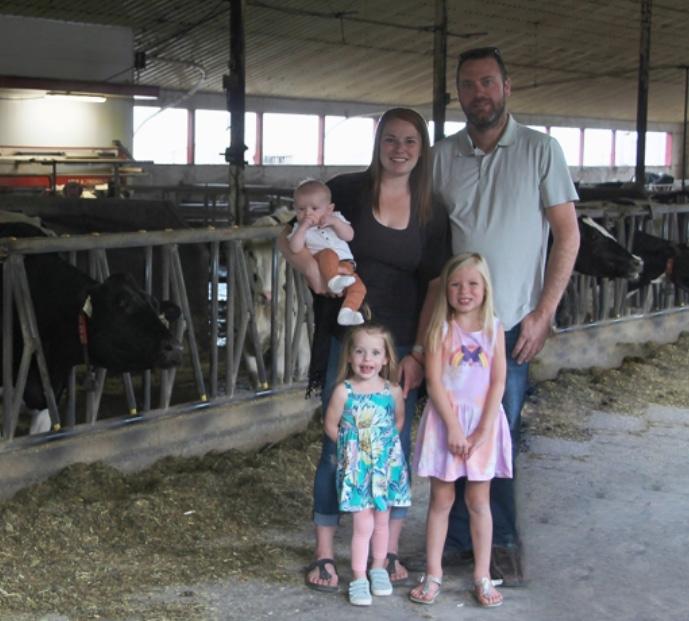
Growing up in southern Alberta on a grain farm, James worked for the neighboring farm he would eventually purchase, doing chores and milking. As a teenager, James took a full-time job at another neighboring dairy
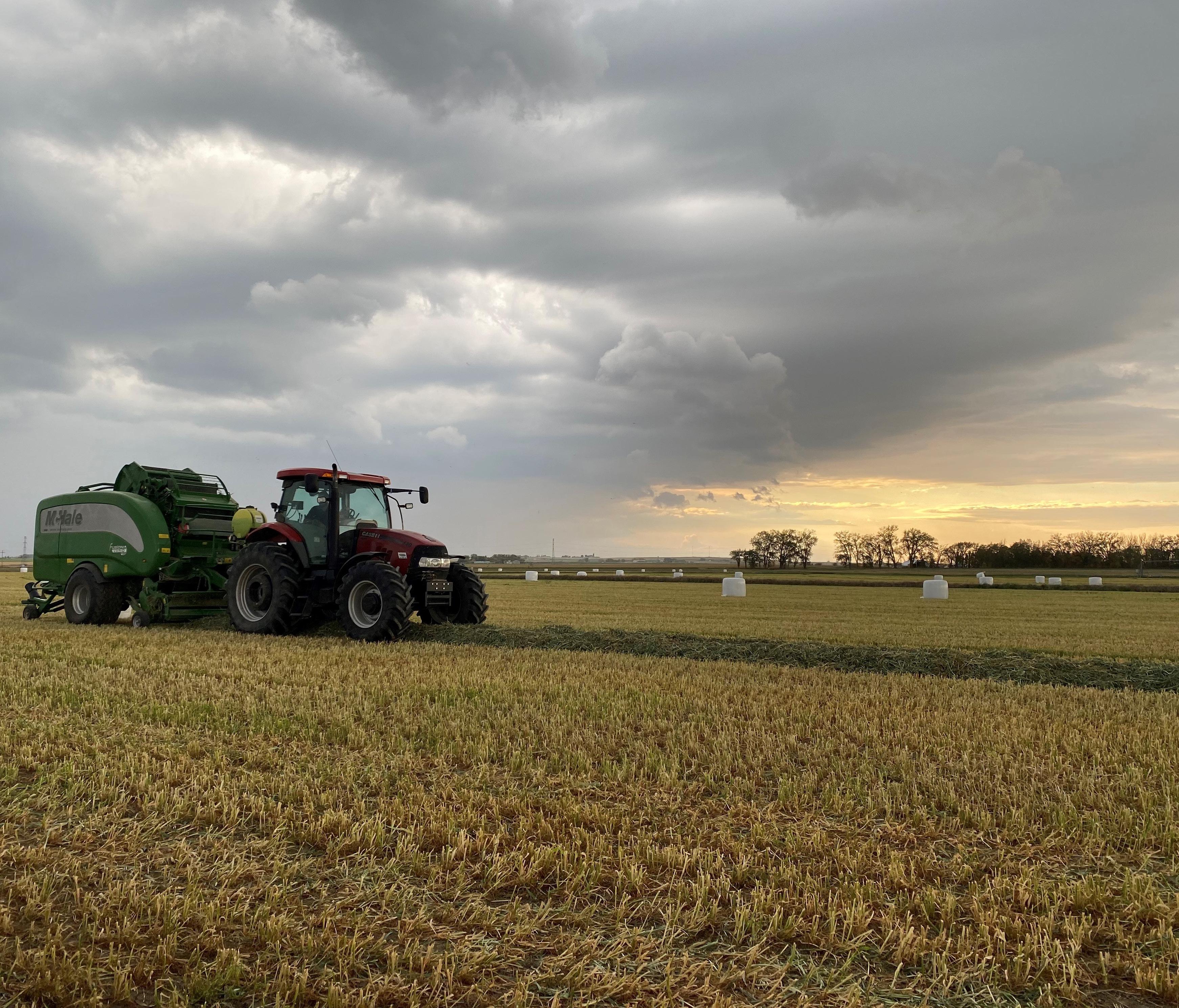
farm, furthering his knowledge, experience and passion for dairy farming.
At 27 years old, the Brilman’s purchased the neighboring dairy farm upon being awarded new entrant status in 2019. The process of becoming a new entrant included paperwork, a business plan, bank meetings, and an interview in Edmonton with the Alberta Milk Board.
Deanna and James share duties on the farm, all while holding several additional job titles. Deanna, when not taking care of their two daughters and one son (4, 2, and 4 months old), is also an RN, bookkeeper for the farm and James’ custom business, oversees the farms’ Pro-Action program, works in the barn throughout the year, and takes care of all the chores during field work. Meanwhile, when James is not occupied with running the dairy, fieldwork (from seeding to silaging to combining}, baling, feeding, manure hauling and more, he also runs a custom silage baling and wrapping outfit for neighboring farms in Alberta. While they take care of most tasks, they attribute a lot of their success to James’ father Frank in particular, who helped them with start-up, as well as ongoing fieldwork and irrigation jobs.
Once settled into the barn with the help of Frank, the Brilman’s got to work sourcing equipment that suited their vision and dream. Exploring their options, James quickly determined he wanted to work with Penner Farm Services in Lacombe, AB to go the Lely route. Installing a Lely Discovery 90SW was the first step, replacing the existing manure management system. Wanting to remain milking in the double 8 herringbone parlour for a short time, they waited patiently for two refurbished Lely A4’s (roughly 5 years old at the time of purchase) to update their milking process. This lent itself to ensuring a flexible schedule for the Brilman’s
young family, as well as focusing on cow health, allowing the freedom of choice for each cow.

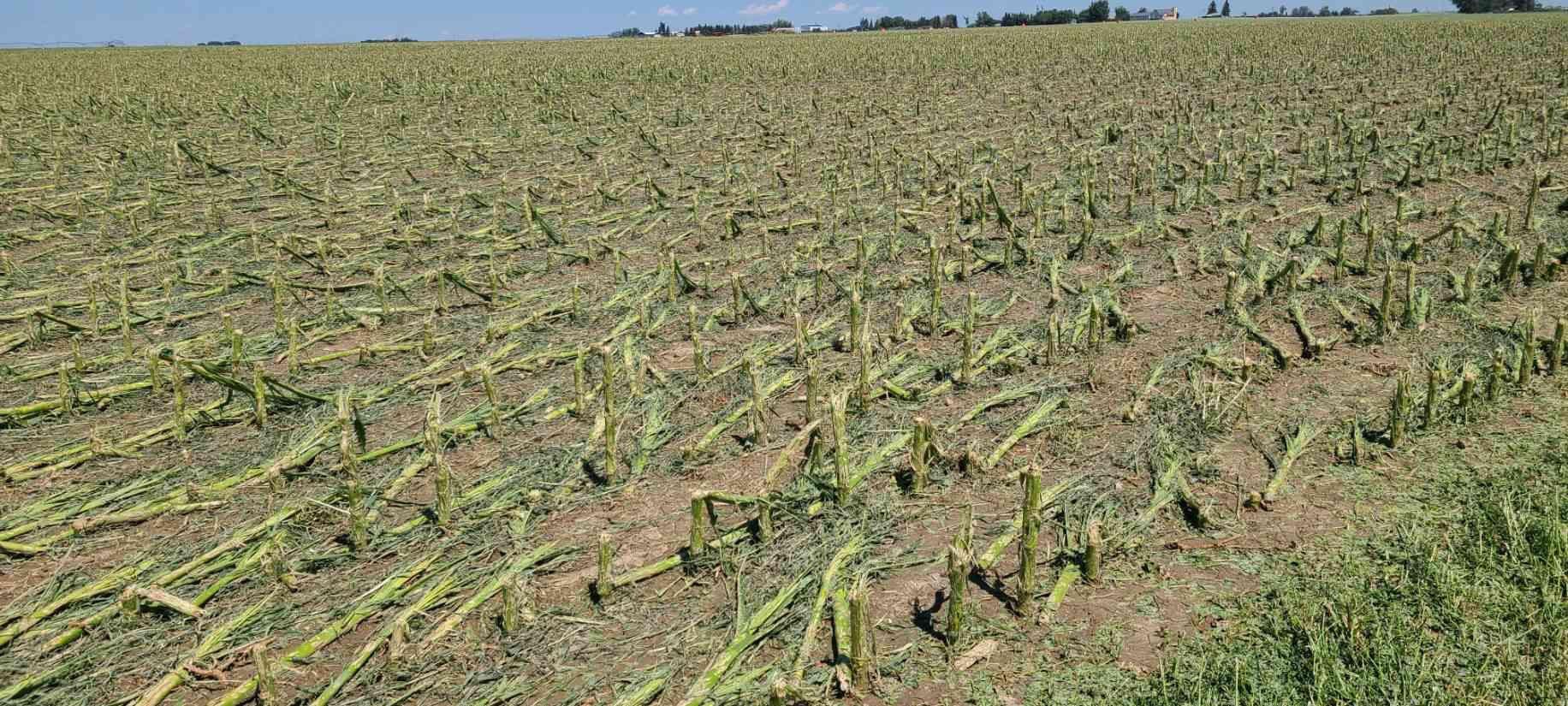
Milk production saw an immediate increase, too, only adding to the already high-producing herd. Nearing the 45L per cow mark, the Brilman’s were filling their quota easily, plus bonus days. While they knew they wanted to go with Robotic Milking down the road, they didn’t anticipate they would be able to go this route so quickly. Purchasing used robots was an affordable way to automate the barn and reduce labour dependency.
Following the changeout on the manure handling and milking system, Brilman decided to update the ventilation, cow comfort, and calf feeding methods. There were no existing fans, only a curtain and open doors providing ventilation for the barn. Installing the 72” Cyclone fans and Kraiburg KEW Plus II mats showed an immediate increase in cow comfort.
The calf feeding options were carefully evaluated before determining the Forster-Technik Calf Rail was the optimal system for their calves. The install was completed by James himself, a project that was finished in under a week. He has found the flexibility a very beneficial aspect for him, given most of the work is done by family and their full-time employee. When they are occupied in the field, the calves are being fed on a regular schedule, allowing for uninterrupted
fieldwork. James has also found the calves have a calmer demeanour, grow quicker and bigger, and end up having a more successful reproduction rate.
As for what the Brilman Family is planning as their next steps, they purchased Kraiburg Slat Mats for the entire barn, as they’re finding the cows could be just a bit more comfortable. Covering the slatted barn with the slatted rubber mats will also allow the cows to walk around safely, greatly reducing injuries and slippage.
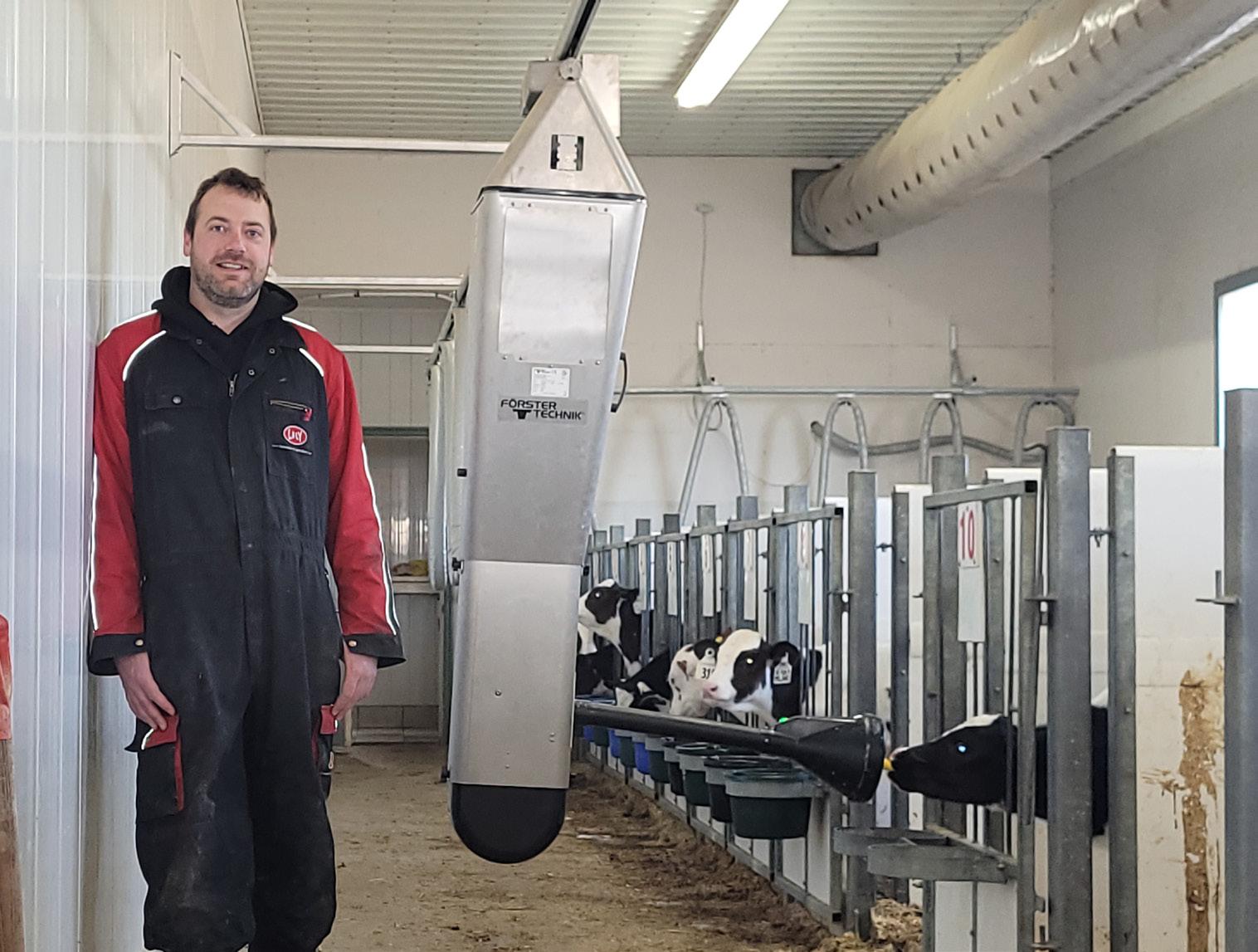
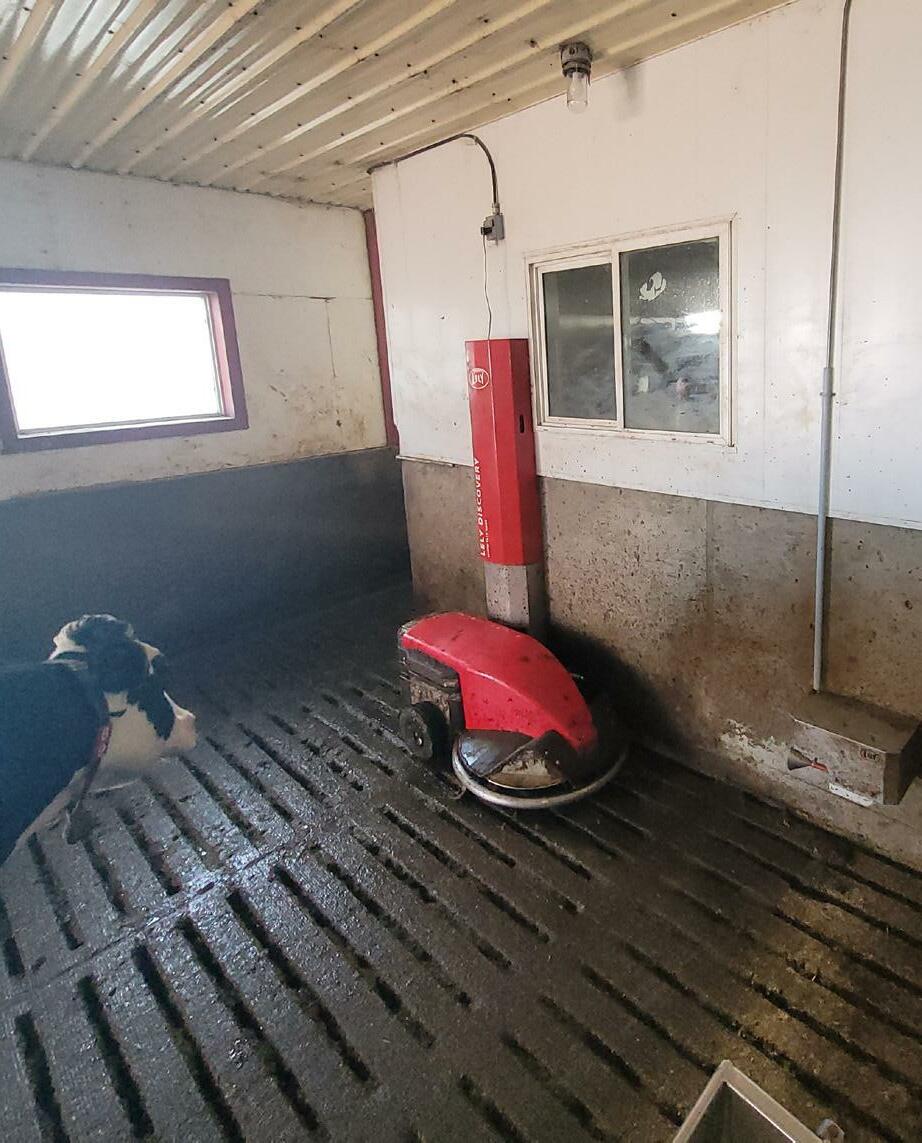
Obtaining more quota and filling the barn is also in the cards, but not just yet. There is also some damage to be repaired, caused by a severe hailstorm that rolled through his farm in July. Not only did they lose the curtains in the barn, but they also lost the entirety of their crops. Thankfully they were able to re-seed and see a somewhat successful crop grow over the last few months. ‘I think we were able to make enough feed for the next year, at least’ says Brilman. Farming optimism at its’ finest!
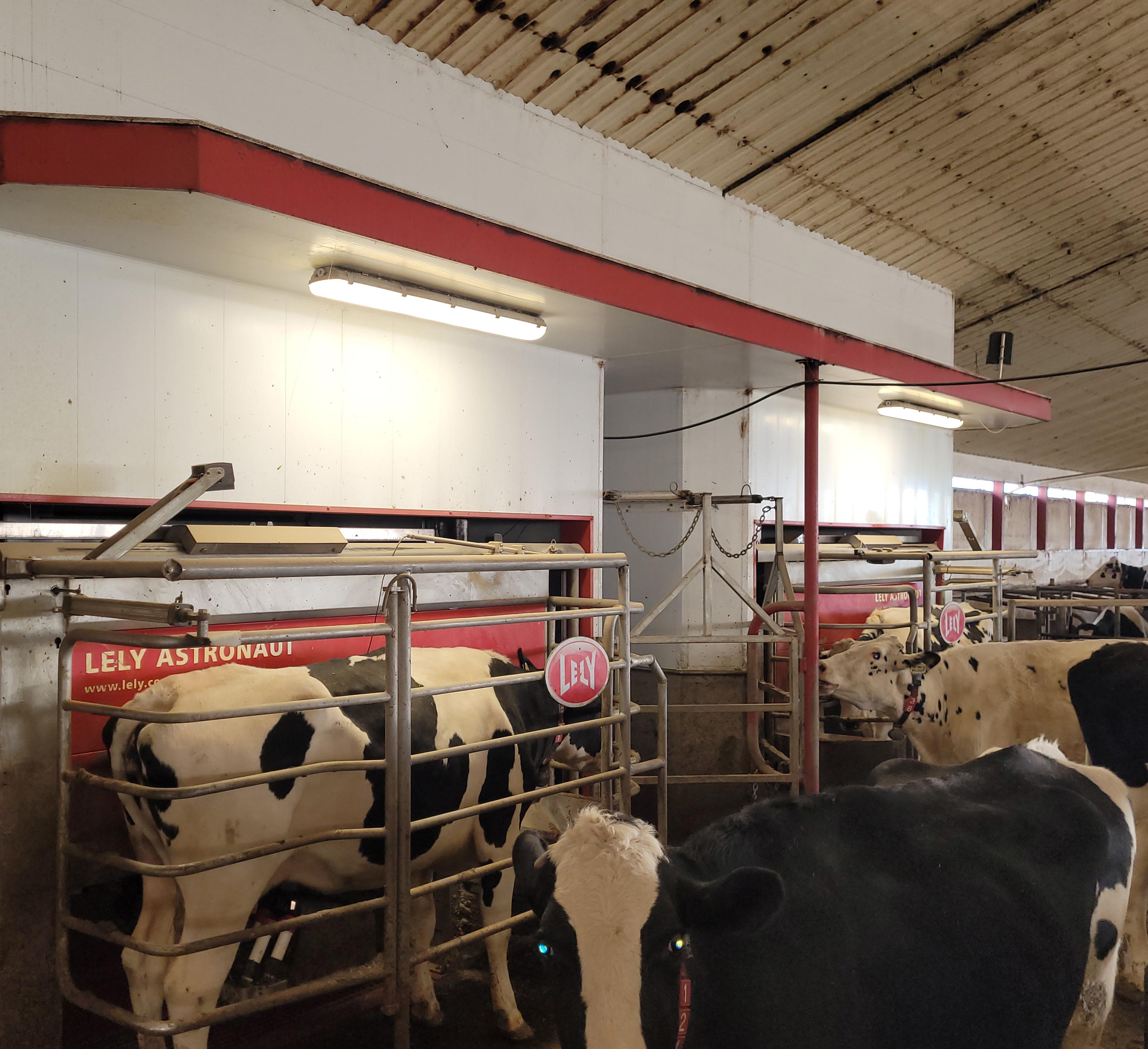
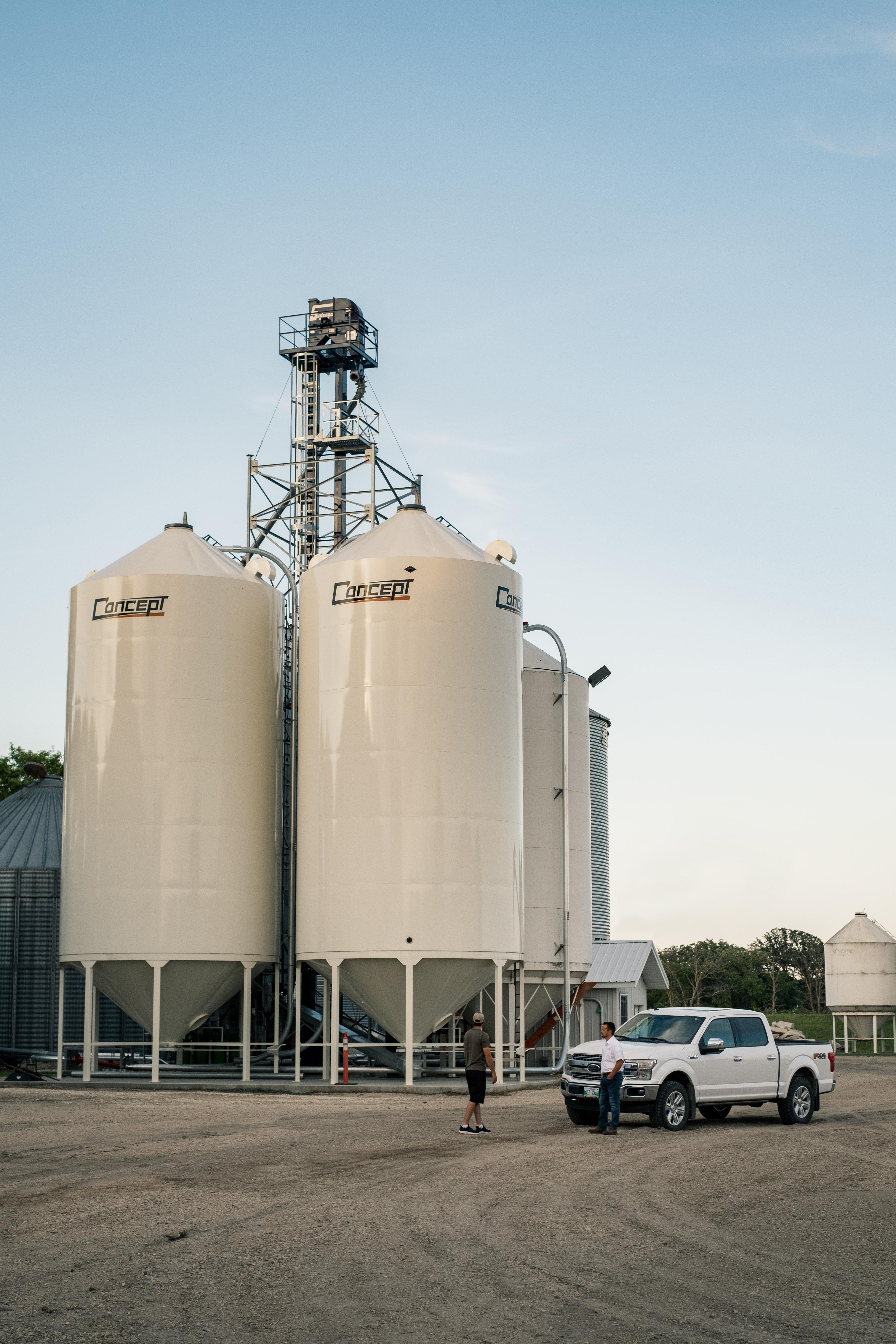
TECH TIPS DETECTING SPAM/PHISH ATTACKS
In 2021 cyber attacks on businesses increased by over 50%. Of these attacks, 90% of data breaches happened due to email phishing attempts.
Email phishing is defined as the fraudulent practice of sending emails purporting to be from reputable companies to induce individuals to reveal personal information, such as passwords and credit card numbers.
Daily, hundreds of accounts are being attacked and information stolen through fake impersonations. The good news is you can protect yourself with common sense and education. Knowing the signs of a phishing attack can save you and your business lost time, resources, and financial pain. Here are some tips.
Stay safe out there!
Reference: https://spanning.com/blog/cyberattacks-2021phishing-ransomware-data-breach-statistics/
1 2 3 4 5 6 7 8
Double-check the sender's email address or number. The display name can be a real person's name, like your boss or co-worker, but the real clue lies in the email address. EXAMPLE: Microsoft would not send an email as @captech.com but rather @microsoft.com
Watch for spelling mistakes in the subject or body.
Keep an eye out for rushing words like "Urgent", "ASAP," or "Right now."
Anything involving requests for money, banking or credit card information. (Double check with someone via phone)
Be careful with "password expired" or "Password reset request" phrases and links.
Only open attachments that you are expecting and know are legit.
Watch for suspicious URLs (links to websites) that try to make you reset a password, in reality; criminals are capturing your login credentials. HOW TO: Simply hover over the link to see where it will take you before clicking on it.
Be at Team Player: If you find a phishing email came from a legitimate account (verified email address), you can be a team player and help everyone by calling and advising them of this problem, as they may not be aware yet.
The bottom line if something feels off, it might be worth a quick call to verify things are legit. Preventing phishing attempts requires us to practice defense.

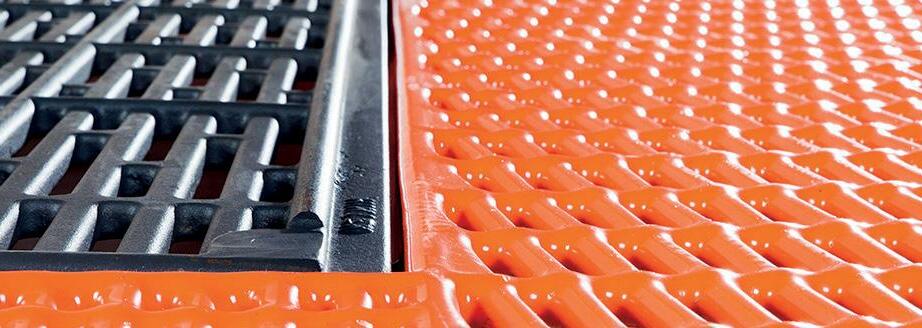

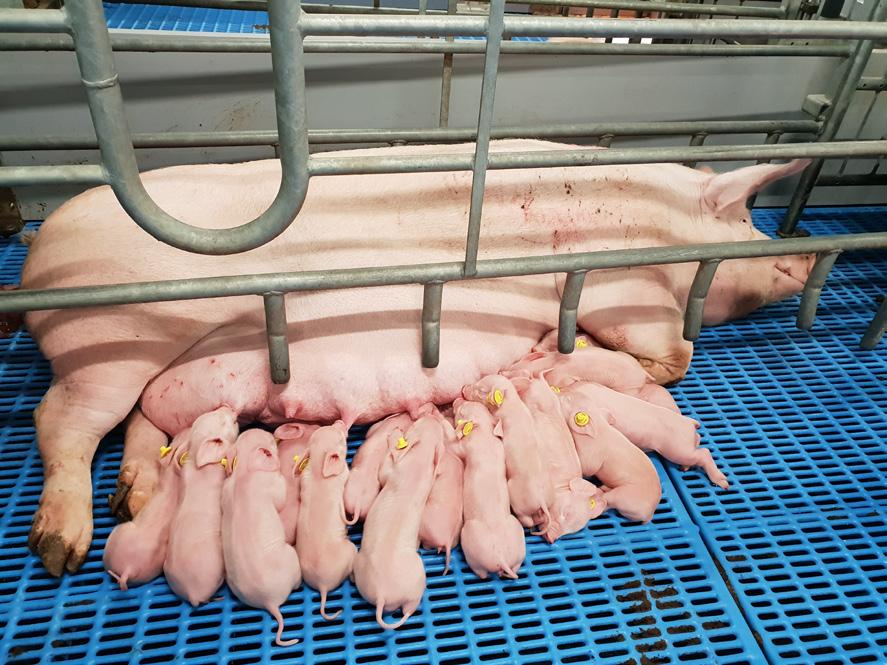
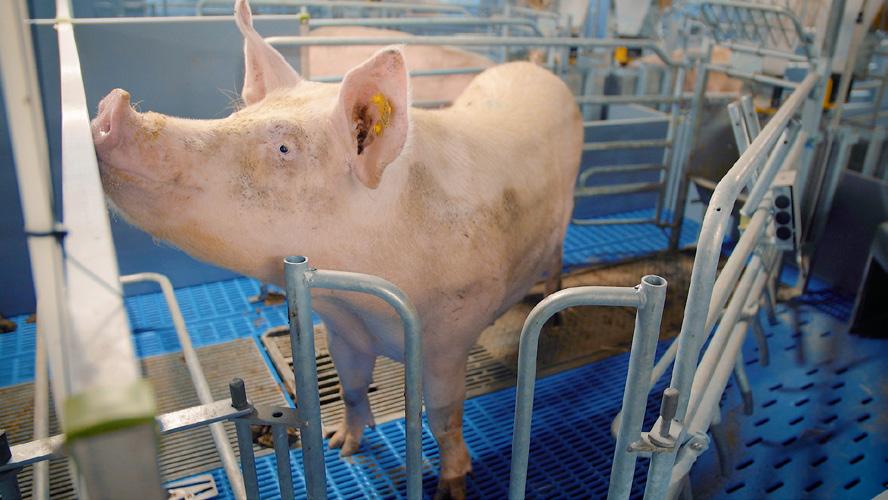
A family learning their loved one's body is unrecoverable is something no one should have to accept. For the Maendel brothers, Manuel and Paul, bringing closure to a mourning family drives their passion for water recovery.
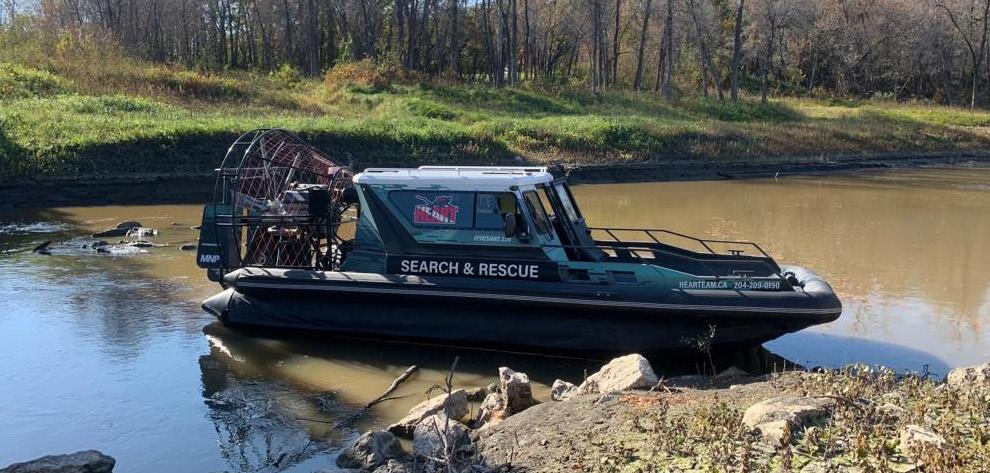
 By Ashley Graye
By Ashley Graye
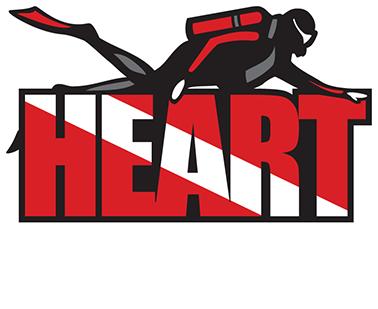
Hutterites, scuba diving and modern technology - you may wonder what they could have in common. For the Maendel brothers Manuel and Paul (Oak Bluff Colony near Morris, MB), the three are so deeply intertwined it has become a way of life, and a method to bring closure to mourning families.
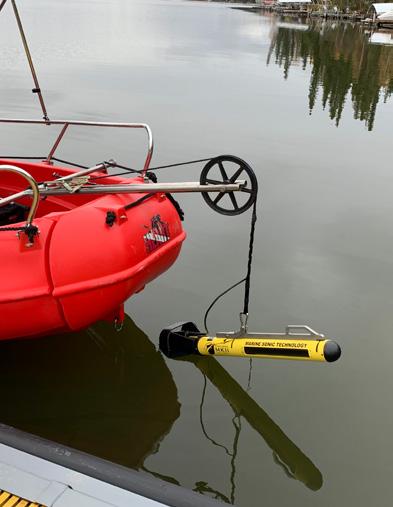

Manuel Maendel, German school teacher for Oak Bluff Colony, recalls first hearing about scuba diving through his teacher who described the Bahamas clear water in great detail, spurring his passion for scuba diving. Month’s later a young child went missing on the colony. After many hours of searching the RCMP dive team was called in to search the colony gravel pit. Shortly after they recovered 7-year-old Jonathan Maendel, as the young Maendel brothers looked on. This would be the seed, as described by Manuel, that was planted by the Lord to use a passion to serve families in need. Throughout the years the interest only deepened, spurring his ask of the colony to enroll him in scuba lessons. This, however, needed a viable justification for how it could be used on the colony and not just as a hobby.

The idea of repairing the irrigation system used for the fields, which is fed by the gravel pit on the colony struck him as the perfect reasoning. He brought it forward, and was given the green light to sign up for Scuba lessons. But, what fun is being scuba certified by yourself? Manuel turned to his brother Paul Maendel. The colony English Teacher/Principal/ Minister was quickly roped into taking the course with him. From there, they assisted various companies with underwater repairs, equipment retrieval and the like.
Not knowing that the Lord was preparing them for a greater mission, Paul and Manuel would hire out their skills to companies, colonies, and the likes. On their days off, Manuel and Paul, would practice and hone their skills by diving in the colony's gravel pit, going so far as to sink a school bus (with many components removed). Manuel began using sonar to explore what they were seeing underwater, from the surface. The curiosity and love for technology started creeping in at this point, being enamoured with the ability to see so clearly what was going on underwater, from the surface.
The Maendel brothers continued to be certified at higher levels, including PADI Ice Diving. Manuel recalls not being sure why he felt so strongly compelled to continue with scuba diving, seeing as the murky waters were a far cry from the beautiful blue Bahamian waters, but he would soon realize why.
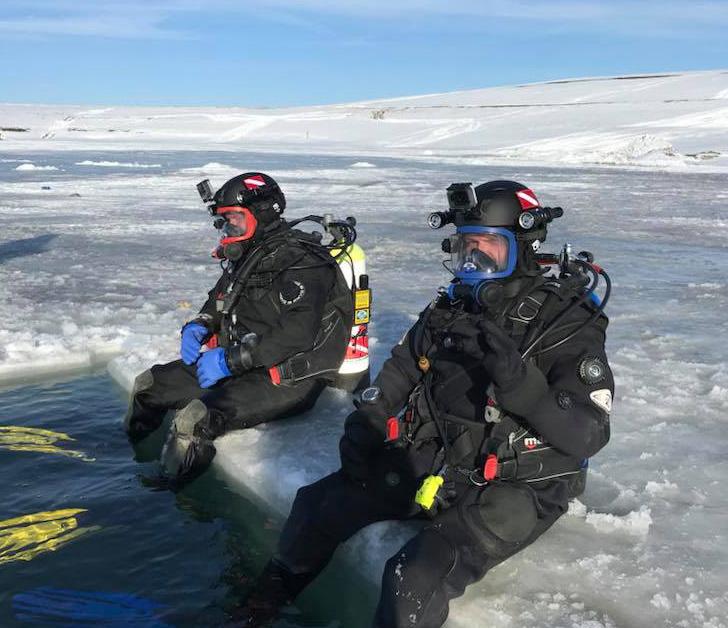
In 2007, their first call to assist in the recovery of Becky Waldner came from Poplar Point Colony. The brothers, along with a couple other colony members headed out to dive the Assiniboine River to search for Becky. Shortly after, a call from another colony to search for Jodi Hofer came in. It was realized that it took far too long to gather their gear, load it in a vehicle, and head out to dive. She was already recovered when they arrived, so on the drive home, the idea of a 6-person public safety diving team at the ready was born. Within minutes, the acronym of HEART was developed – the Hutterian Emergency Aquatic Response Team.
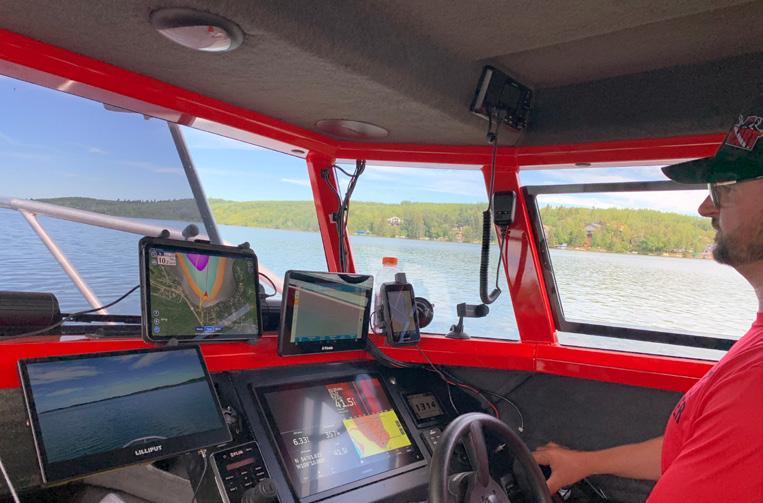
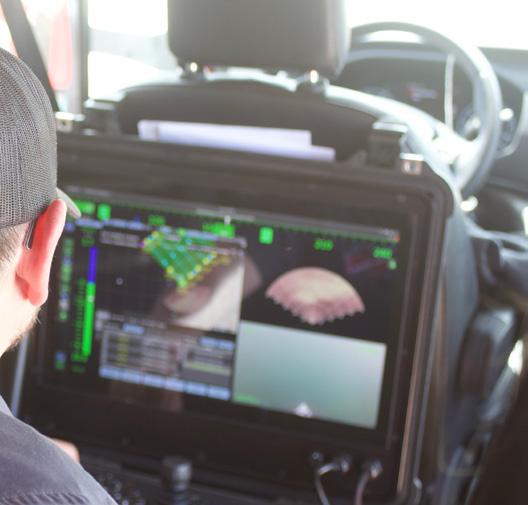
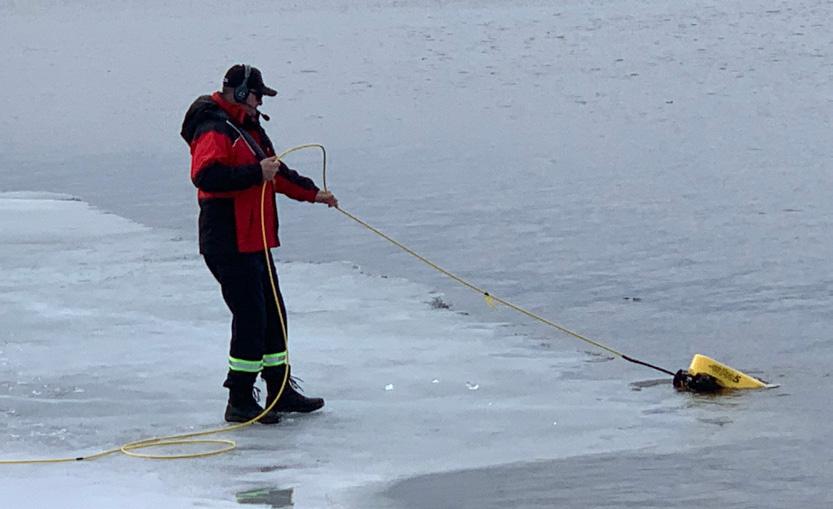
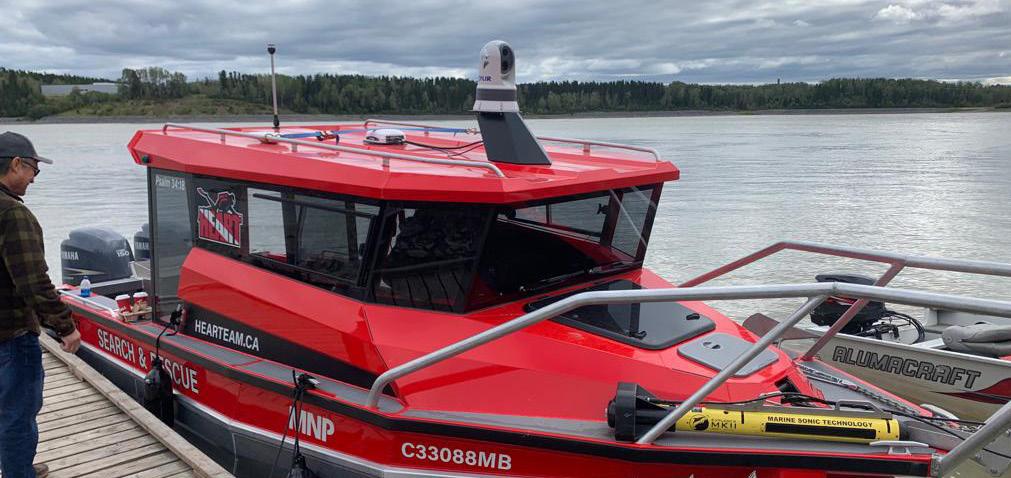
Their next call would be a successful recovery – but RCMP weren’t too sure what to do with a group of Hutterites on a boat, with a body in tow. The team was new and unknown to law enforcement officers. So understandably, their equipment, including the recently purchased sonar, were confiscated for hours while the police investigated. Finally, it was determined they meant no harm, only help, and their equipment was returned. From here, a relationship was fostered between HEART and the RCMP, local Fire Departments, and Search & Rescue Teams. A relationship that continues to grow and complement each other. Team members unanimously agree “we aren’t here to replace the RCMP- we all want the same thing, to bring closure to families in the most timely manner possible”.

Over the years, Manuel and Paul have realized many unique obstacles they would run into. From being immobilized due to dangerous half frozen, half flowing rivers, to unknown entry points, the need for assistance via advanced technology was prevalent. Purchasing a ROUV or ROV (Remote Operated Underwater Vehicle) from an auction, which turned out to be not quite good enough, would be the start of their deep dive into technology assisted recoveries.

Since 2014, the team has been presented with numerous challenges on each mission, through the guidance and provision of the Lord each challenge was

quickly remedied. With the help of donors HEART has been able to acquire and utilize specialized equipment such as: Trimble EZ steer, Multibeam side scan sonar, ROV, Riptide, Severcraft, and a Stabicraft to name a few. This technology does not come with a small price tag, as you can imagine. When HEART is called upon by the RCMP, local search and rescue, or families – they do not charge for their services, making it difficult to fund operating expenses, never mind investing in these types of technology for more efficient, safer recoveries and rescues. They have been overwhelmed with donations from the colonies, but as more technology is acquired, more funding is needed. But as each obstacle presented itself and the Lord provided, Manuel and Paul trusted that God would make a way. Enter Naomi Murray, whose father was recovered by HEART in 2021. Moved by the services provided, and desiring to serve other families in need, Murray left her full time job to become a volunteer with HEART, coordinating sponsorships and donations. Industry partners within agriculture have partnered with HEART at a rapid pace, allowing them to move forward with investing in these assets which have amounted to over one million dollars. The dollar amount may seem high, but recovering a body or rescuing somebody’s Father, Mother, Aunt etc, is truly priceless.
They have been involved in over 50 recoveries, with 2021 and 2022 being their busiest years yet. They
never want to receive a call, but they are at the ready when a request for help comes in. While they would love to help every single family who calls, balancing home-work-volunteer life is a priority not only for their mental health, but the safety of recoveries as well. A number of cold case calls come through, typically with a lack of information to plan a viable recovery mission, regardless of the technology employed.
The use of technology on the colony isn’t exclusive to the HEART Team, however. Oak Bluff Colony is also known for its innovative company, EcoPoxy, putting to work any waste from the colony’s poultry barn (eggshells and feathers). Turning to manufacturers, exporters, and chemists, they were able to create an epoxy made up of more than 52% bio-based material of such items like soybean oil, flax oil, cashew nut oil, eggshells and more, garnering it the non-toxic label.
As for what’s next for HEART, they plan to continue their training, learning, and spreading water safety awareness among the colonies, while keeping succession planning in mind. The team is also looking ahead to who will carry on the legacy and join the team, as needed. Manuel and Pauls’ nephews have expressed interest and have started getting more involved. While it’s uncertain who will join the team and from where,

Manuel trusts it will be taken care of, stating ‘I don’t know where we’ll be next year, but it’s obvious the Lord is guiding us. He’s weaving the tapestry, we are just following his lead.’

They also plan to build a dedicated facility on the colony, to house and secure the equipment, vehicles, and tools, pending funding of course. The colony fully supports HEART and their mission but have encouraged them to seek funding off the colony. Becoming a registered charity has helped the team gain more donors, as well as gaining Naomi as a volunteer.
If you wish to support and donate to the HEART team, please visit https://www.hearteam.ca.
If you wish to donate to HEART, please visit: www.hearteam.ca or scan the QR code with your smartphone.
NEW STANDARD AG NOW PROVIDING GRAIN & MILLING SOLUTIONS
AgriHub Inc is pleased to announce the transition of our Manitoba Grain Division from Penner Farm Services in Blumenort, MB to New Standard Ag in Winnipeg, MB. The Grain Division provides solutions in Drying, Handling, Milling, Storage, Controls and now also Pelleting. This transition will take effect immediately for Sales, while inventory and service will be transferred over from Blumenort to Winnipeg in the coming weeks.
The NSA Grain team will consist of Travis Martens, transitioning from PFS-MB, bringing with him over 5 years of experience in the Grain & Milling division, along with decades of Poultry experience; Vince Jeanson, one of our newest members of the New Standard team, a Red Seal Electrician in his previous job; Kevin Kurbis, Sales Manager at New Standard Ag and Andrew Penner, the General Manager of New Standard Ag. Steve Klein, Director of Grain Solutions, will provide expert support, solutions design leadership and product knowledge to Travis and Vince, as well as the other Grain teams in the AgriHub Family of Companies. The service team at New Standard Ag will be trained to handle grain service requests through the Fall of 2022. During the interim the PFS-MB Service team will continue to service the existing grain & milling customers.
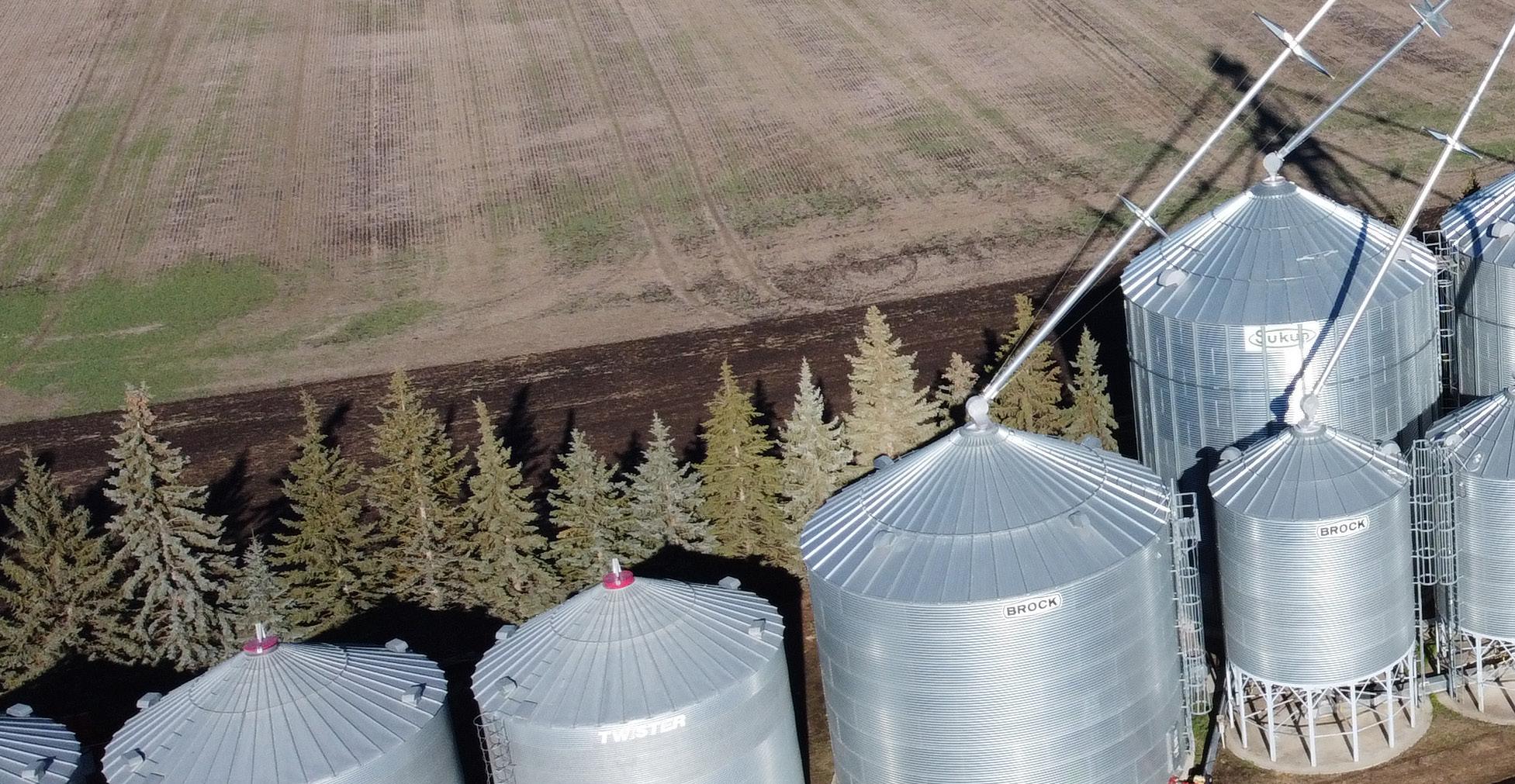



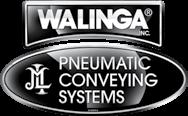
FOREIGN ANIMAL DISEASE PLANNING
AND MOVING FORWARD.
By Jake PetersonForeign Animal Disease outbreaks (FADs), hard to think about and harder to talk about. However, the reality is this… having conversations now can save a lot of frustration and effort later.
This summer, we attended one of the many great talks at the World Pork Expo in Des Moines. The topic was Foreign Animal Disease: Depopulation and Disposal. The talk focused on the importance of having a well written emergency plan.
We’ve decided to expand on this topic to also cover our friends in the poultry world as there is a lot of crossover but a few high level differences to consider. Please keep the following in mind as you read this article.
Poultry farm ownership is much more integrated when it comes to the animals life cycle. Often birds are hatched, raised and processed within the same ownership network. This integration means less transportation needs, less transportation means less potential exposure. Also, poultry barns are built so larger machinery can get inside, to make compost piles and allow for easier carcass management if a FAD outbreak occurs.
Pigs typically move 3 times in their lives, sow farm to nursey, nursery to finisher and finisher to the slaughter house. Opening up the potential for a FAD exposure. In addition, FAD planning in hog dense area of the Midwest can become more challenging. For example, a hog finisher on a small piece of land may have limited options. Having a FAD plan for every location is important to the success of your plan.
From beginning to end, a Foreign Animal Disease outbreak can undoubtedly be one of the most stressful events a producer might face. Working out a
realistic, suitable emergency plan can make a world of difference to deal with the threat and working towards a successful conclusion to the situation. Advance thought and preparation lead to cooler heads, easing tension and finding solutions to problems.
Planning
Knowing what steps to take is crucial when starting your plan. An excellent starting place is with a phone call to your state veterinarian. They will be familiar with local regulations, what a response will look like, and more. They, and their staff, are here to help. Collaboration is vital to each plan. Collaborators will likely include your farm veterinarian, your state animal health/industry board, your nutritionist, health consultants, and the National Animal Health Laboratory Network (NAHLN). These folks are here as resource’s to assisting in successfully executing your plan and help get you back up and running as quickly as possible.
A standard response to a Foreign Animal Disease outbreak typically has five main steps: (it is important to understand that specific diseases may have different plans)
“The man who is prepared has his battle half fought.”
-Miguel De Cervantes.
1. Foreign Animal Disease Investigation for Disease Detection
is an invaluable resource for these decisions. Only AVMA approved methods of depopulation can be utilized.
5.
Cleaning and Disinfection
Within each of these steps, decisions need to be made by the producer in collaboration with the state and/or USDA. This is where that communication with your state veterinarian can help you prepare and get started.
Things To Consider When Forming Your Plan
The easy part is confirming an FAD outbreak with veterinary diagnostic laboratory test results; the more challenging part is noticing it before cross-contamination occurs. Having a strong relationship with an accredited veterinarian is vital; your veterinarian will be able to assist you through your FAD planning. Familiarize yourself and your workers with disease symptoms so you can take action quickly. Empower your workers to ask questions and report problems.
Once an outbreak is confirmed, the goal is to keep it contained and dispose of the threat as soon as possible to stop its spread and avoid further outbreaks.
Your plan will not match your neighbor’s plan. There is no one-size-fits-all recipe. Each operation has unique circumstances that require unique solutions. One place to start would be creating some continuity among your operations, simple as a contact list at each site, names and phone numbers for state vet, county offers, fire department, sheriff, farm staff, local human health, etc.
Methods of Depopulation
Part of the FAD response plan for some diseases will include choosing the proper method(s) to depopulate your animals. Many factors must be weighed including but not limited to time constraints, worker safety, ownership, indemnity, number of swine, size of pigs, and animal environment. Again, your herd veterinarian
The National Pork Board and AVMA have done the most research on the following methods of depopulation.
• CO2, Carbon Monoxide
• Gunshot
• Penetrating Captive Bolt
• Sodium Nitrite
• Electrocution
• Foam: Nitrogen-filled and Water Based currently being researched as an approved method.
• Ventilation Shutdown: Contact your local state/area vet for more information
Each method has pros and cons; we encourage you to read up on each on the Pork Board website. Familiarize yourself with your options and develop plans for the type(s) of production on your farm. Two good resources are: www.avma.org/AVMA-Guidelinesfor-the-Depopulation-of-Animals.pdf and https:// porkcheckoff.org/pork-production-management/swinehealth/euthanasia/
Carcass Disposal After Depopulation
Assuming depopulation is required for a given FAD, your emergency response plan must include carcass disposal. Finding the best disposal solution for your farm can cause some headaches. Disposal must happen on-site to contain the pathogen and prevent its spread.
The four most common options for disposal are:
1. Incineration: High cost associated with equipment and fuel.
2. Deep-Pit Burial - Large equipment is required and operating and renting costs can become prohibitive.
3. Carbon Based - Whole Composting / Ground Composting and Shallow Burial with carbon
Composting type disposal options require carbon and depending on your local resources; this may not even be an option. Awareness of the amount of carbon needed and how to source it should be evaluated while writing your plan.
Methods of On-Farm Disposal: Pros & Cons
Here are some more important considerations as you choose a disposal method:
State & Local Regulations
Each state has its own rules about where you can bury or compost. Your animal health/industry board can help you navigate these regulations.
Virus Inactivation
How long will it take for the virus to die completely?
Available Real Estate
How much land do you have available for disposal? Remember, this land will be tied up until the virus is inactive.
Available Machinery
Making a compost pile versus doing deep burial will require different machinery and operators.
Distance to groundwater/surface water/well water:
You may not be able to bury or even compost in a location where water is too close.
Neighbor Restrictions
There maybe considerations with your neighbors and circumstances to consider
Electrical & Utilities
Overhead electrical lines and buried utilities may also come into the equation
Soil Types
Does a prospective burial site have soil conducive to burial or composting?
Topography
How feasible is burial or composing based on the location of your land?
Deed Restrictions
There may be restrictions in your deed about disposal restricting your options.
Key Producer Questions and Considerations
Clearly, there is a lot to process and review when creating a depopulation and disposal plan in case of an FAD outbreak. Here is a final outline of what questions to ask and consider when creating your action plan.
What are My Options?
Consider Animal Welfare & Biosecurity
What are my resources?
Consider your state animal health/industry board, farm veterinarian, nutritionist, equipment, real estate, and access to carbon and State regulations. These should be listed in your plan with contact information for ease of use when needed.
What are my next steps?
Finalize your plan with any approvals or sign-offs needed and educate your staff.
Who is responsible for Carrying Out my plan?
Knowing who is responsible for what task will help in a quick execution of your plan.
When will I review my plan?
Put a review date on your calendar and don’t let it pass without following up. Review your plan with your veterinarian and your workers.
Hopefully, you will never need to execute this plan, but if the day does come, you'll be ready.
Links and Additional Resources:
https://www2.illinois.gov/sites/agr/Animals/ AnimalHealth/Documents/Producer%20Guidance_ FAD%20Investigation%20Steps_FINAL.pdf
https://www.slideshare.net/porkcheckoff/planning-foremergency-massdepopulation-of-swine

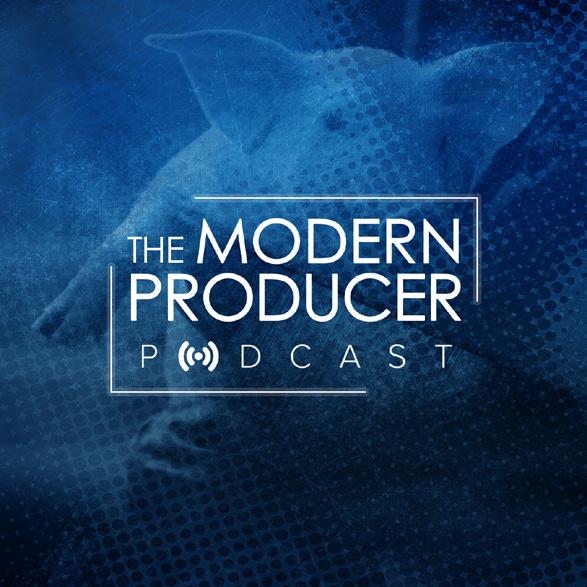
Dundas Agri Systems, started in 1981 in Brinston, ON, has been known for excellence in milking solutions to Dairy farming partners in Eastern Ontario for over 40 years. Their dedication and specialization in milking solutions, both conventional (Boumatic Parlors), and robotics (Lely automation), has garnered them the title of experts in their field. The earned title was no accident, however. In 1981, Bart Geleynse started the company out of a need for automation in milking. His choice of partnering with Boumatic was because their reputation preceded them, they offered progressive products (like milk meters), and their values. While they dabbled in other areas of the barn, they have always been drawn to focus on the milking aspect. In 2009, they partnered with Lely to provide robotic milking solutions as well, offering Dairy Farms the option to best suit their vision and goals.
To date, they’ve partnered with roughly 250 dairy farms in the Ottawa region, with 25 currently running parlors, and 130 farms running robotics, to the tune of a total of 292 Lely Astronaut Automatic Milking systems., with growth in their sights. They plan to continue their focus and excellence in milking solutions, while adding complementary technological advances in the dairy world, in their efforts to make the life of a dairy farmer better, and easier.
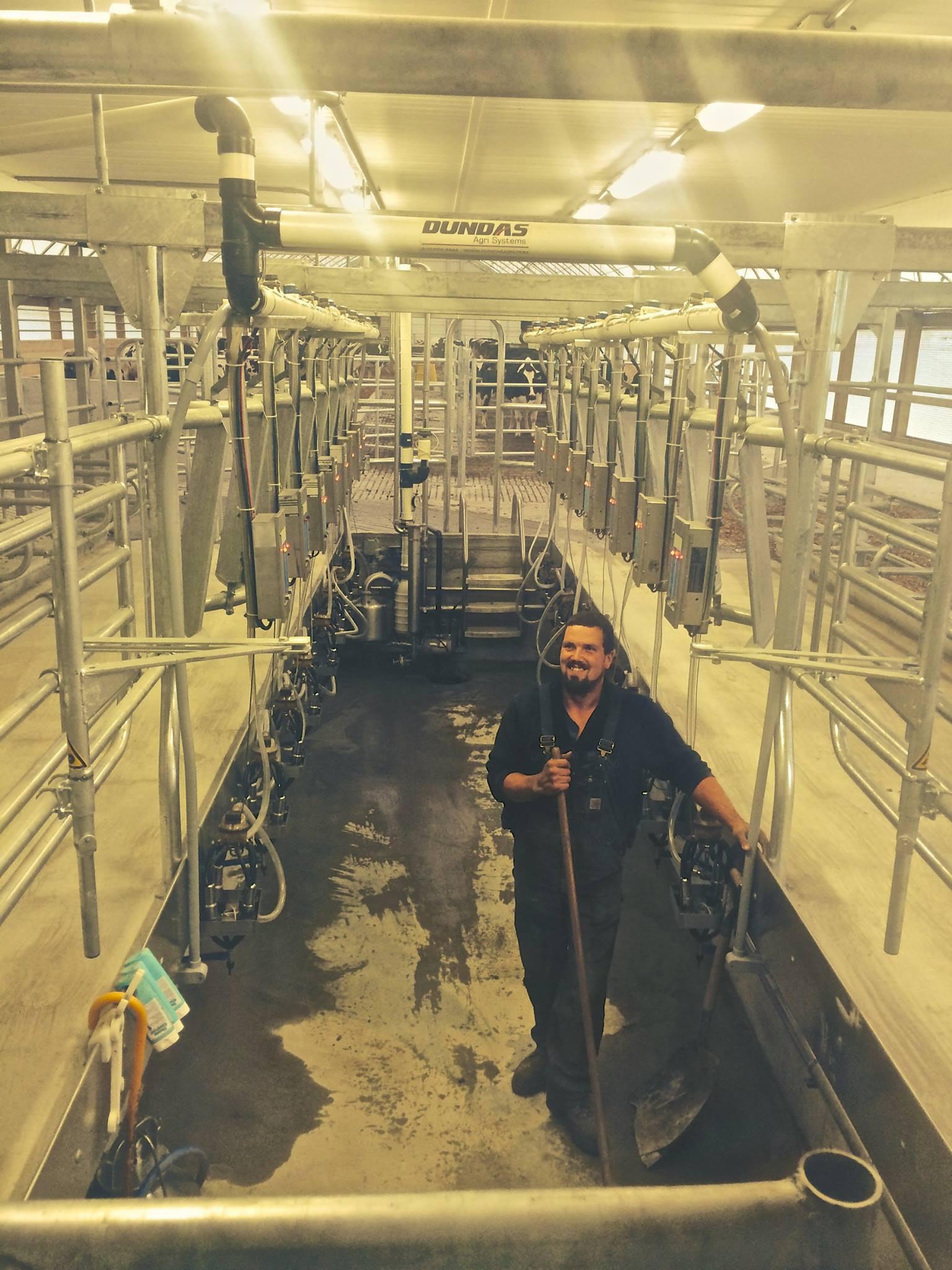



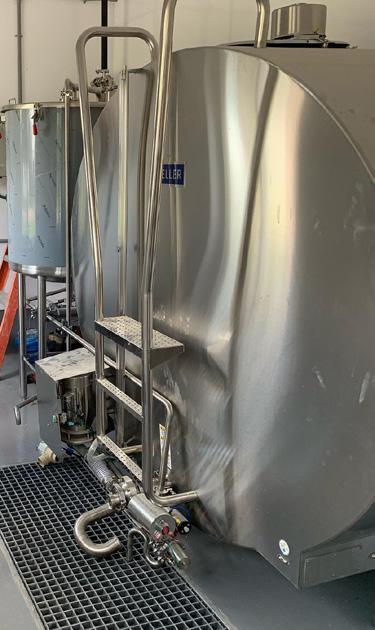
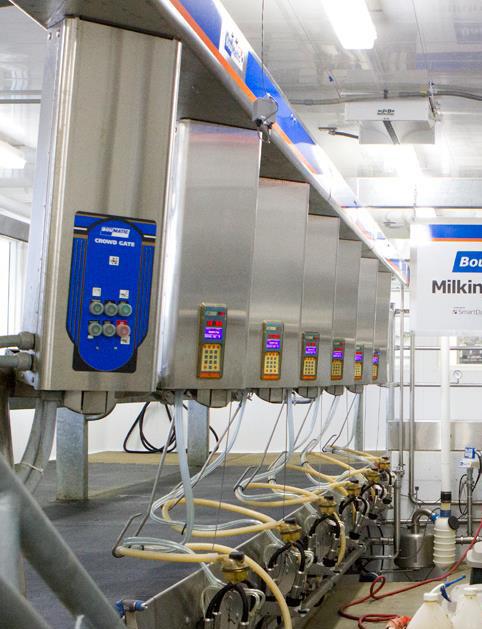
If you focus on something, you become really good at it. The thing we’ve chosen to focus on, is to become excellent in milking equipment.
An Interactive Barn Tour Souris River Colony
Imagine touring a barn without infringing on biosecurity concerns. Now, imagine touring the barn from the comfort of your favorite chair, with your favorite snack and beverage at the ready. Too good to be true? Think again!
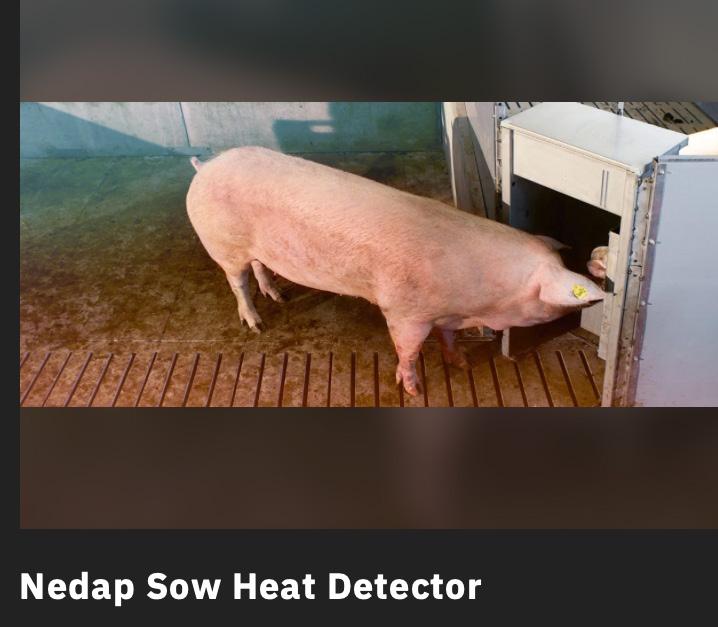
Souris River Colony Hog Barn addition is available for your touring pleasure on any device with access to the internet, at any time of day. The self-guided tour features information points throughout the barn for you to dive deeper into each piece of equipment, complete with model numbers, sizes, design aspects, photos and videos.
Upon entering the barn via the link below, use your mouse or finger to drag your view of the barn around you. Click on a location in the barn to ‘jump’ to that spot, exploring the layout and equipment there. Whenever you see a blue target, click on it to view details.
Scan with your smartphone to begin your interactive barn tour
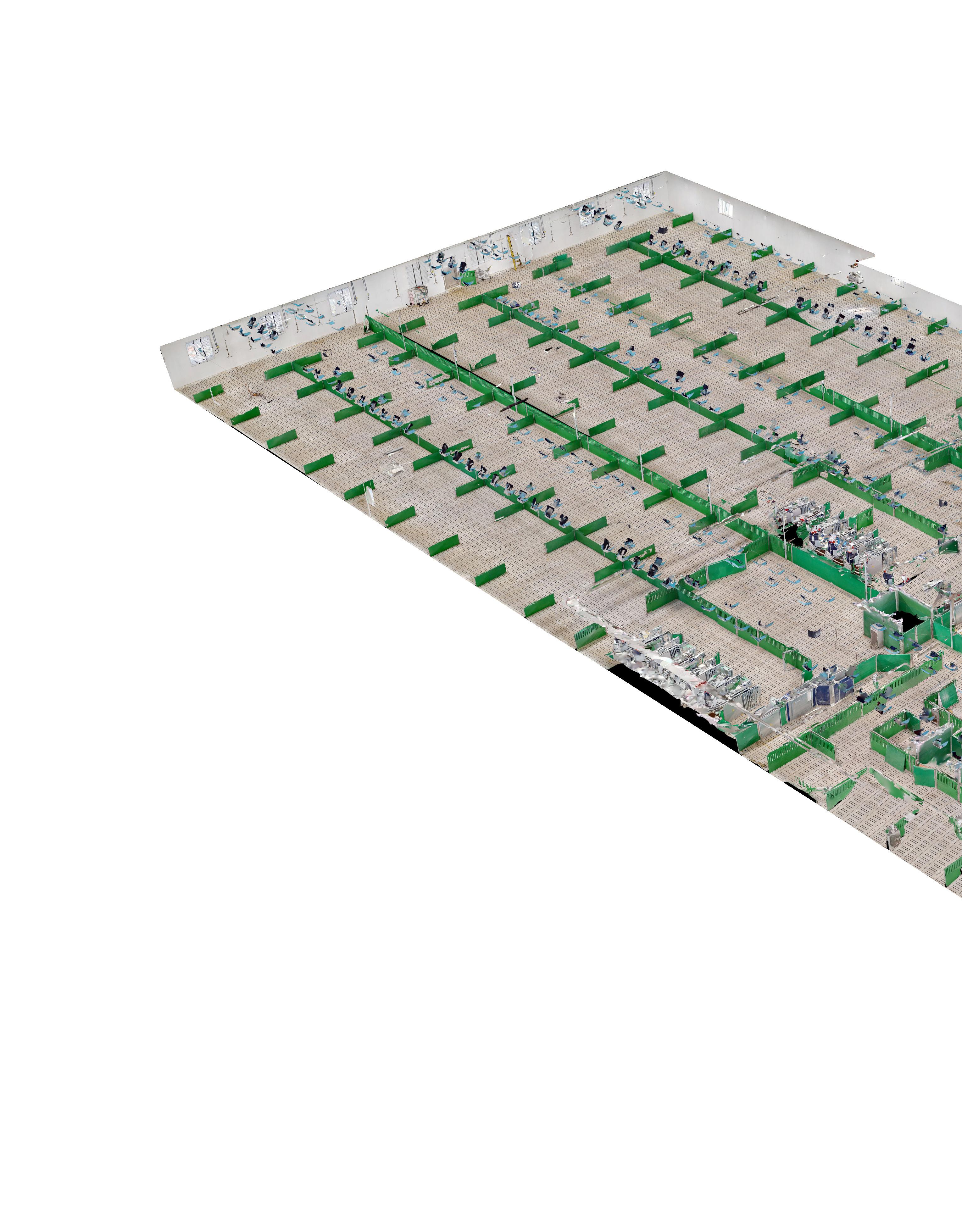 Tour By: Ashley Graye
Tour By: Ashley Graye


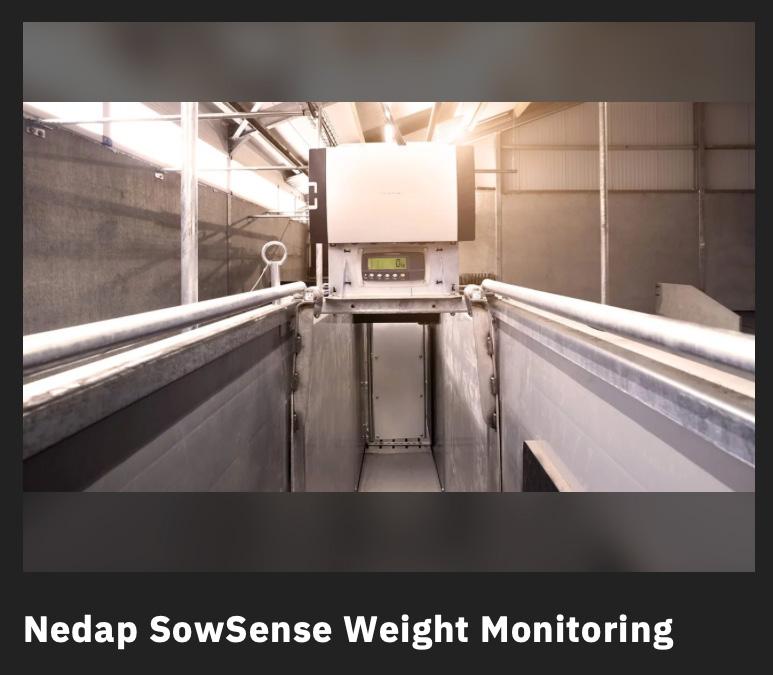
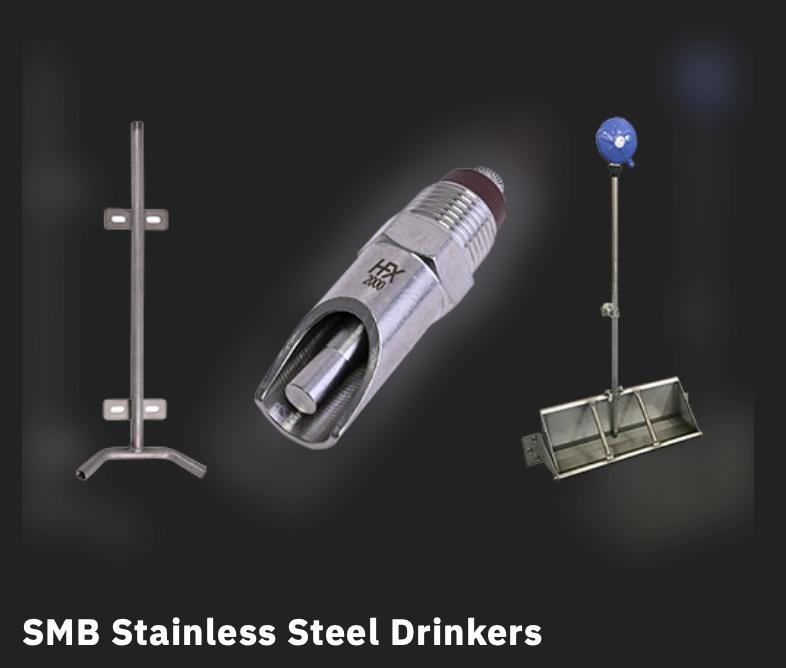
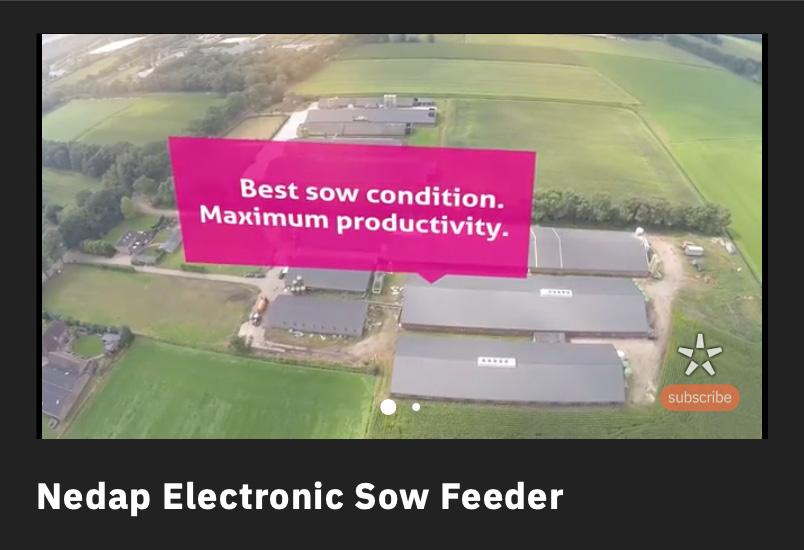

CONFINED SPACES FARM HEALTH & SAFETY
By Neil ArmerIf you work on a farm, chances are you will be exposed to the hazards of confined spaces. So, what exactly is a confined space? Different jurisdictions might vary slightly on how they define a confined space, but I think WorkSafe BC defines it best as having the following characteristics:

• Is enclosed or partially enclosed,
• Is not designed or intended for continuous human occupancy,
• Has limited or restricted means for entry or exit that may complicate the provision of first aid, evacuation, rescue, or other emergency response service, and
• Is large enough and so configured that a worker could enter to perform assigned work.
Some examples of confined space on the farm are:
• Grain bin
• Silos
• Manure storage facilities
What Are The Hazards?
• Hopper bottom feed bins
• Grain transport vehicles
• Septic tanks
• Fertilizer storage tanks
• Pump pits
• Attics & Crawl spaces
There are many different hazards that may be present in confined spaces, ranging from toxic environments to mechanical hazards. Lets look at some common ones that we might see on the farm.
Dangerous Gases
The breakdown of manure is a biological process, and factors such as temperature, humidity, and air flow can impact the release rate of gases produced during this process.
Hydrogen Sulfide - It has a distinct rotten egg smell and is heavier than air. After breathing this gas for a short time, your sense of smell becomes fatigued, and you can no longer detect an odor. At low concentrations H2S irritates the eyes and respiratory tract while at moderate levels, exposure causes headache, nausea, and dizziness. At high concentrations above 1000 – 2000 parts per million death is almost instantaneous. Hydrogen sulfide is heavier than air, so it can easily accumulate in low-lying areas of confined spaces.
Methane - A colorless and odorless gas produced during the decomposition of manure in storage. methane is flammable and potentially explosive. Methane is lighter than air, so it does not accumulate in low-lying areas of confined spaces.
Ammonia - Found in manure pits or aboveground tanks used for manure storage it has a strong odor that can irritate a person’s eyes or respiratory system.
Carbon Dioxide - A colorless and odorless gas associated with animal respiration and manure decomposition. Carbon dioxide can replace the oxygen in a confined space. If you breathe in air that contains high levels of carbon dioxide, carbon dioxide can replace the oxygen in your blood and may result in headaches, drowsiness, and death (after prolonged exposure). Carbon dioxide is heavier than air, so it also can accumulate in low-lying areas of confined spaces.
Mechanical Hazards
Mechanical equipment such as augers, mixers or rotating tanks can be dangerous to work near. Even when equipment is shut off someone else could accidentally turn it on. The machine could also contain remaining energy, such as accumulated pressure.
Engulfment Hazards - Grain that is being stored can be a risk because you could get trapped or buried. Grain can form “bridges” with empty spaces underneath them. If you walk on the surface of one of these bridges, it could collapse and bury or trap you. Bins and hoppers are especially dangerous. You could be trapped or crushed when material is accidentally discharged into an empty bin or hopper.
Drowning - If the confined space has liquid in it even as little as a few inches the potential for drowning exists. Workers have drowned in confined spaces after being knocked out by toxic gas, a lack of oxygen, or from a head injury that caused them to fall to the floor.
Manage The Hazards
1. The first step is to identify what confined spaces you have and what hazards each confined space is likely to be present. Once you have identified them, post signs at the entrances of the confined space them so others will be aware and not enter them.
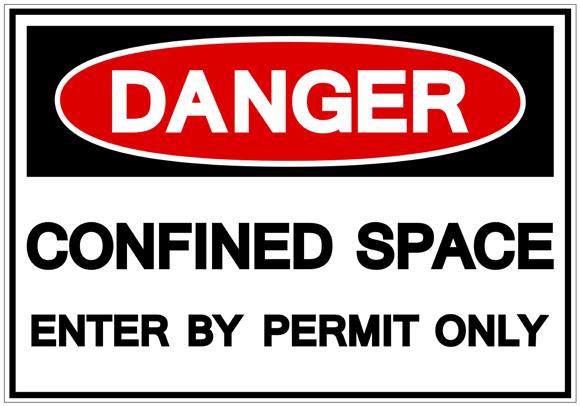
2. The best way to eliminate being exposed to the hazard is not having to enter the confined space in the first place. Is it necessary that you enter the space or could you hire a trained contractor to complete the work needed in the confined space?
3. If you do have to enter confined spaces, get trained! There is specialized equipment and planning that is needed to safely work in confined spaces. A good training program will let you know what you need and how to do it safely.
4. Have a rescue plan in place. An unplanned rescue will probably be your LAST!
A delicacy made with all the right ingredients – cream cheese, cocoa powder, whipped cream and A LOT of melted chocolate. What cheesecake dreams are made of.
Ingredients
Crust
o 2 cups graham cracker crumbs
o 2 tbsp granulated sugar
o 6 tbsp melted butter
Cheesecake
o 1 pkg unflavored gelatin (4 envelopes –7g per envelope)
o 2/3 cup cold water
o 4 pkg original cream cheese (8oz/pkg)
o 2 cups unsweetened cocoa powder
o 1 tbsp vanilla extract
o 2 ½ cups heavy whipping cream (very cold)
o 20 ounces dark chocolate or milk chocolate melted Chocolate Ganache
o 2 cups of semi-sweet chocolate, finely chopped
o 1 tbsp light corn syrup
o 1 cup heavy whipping cream (hot) Finishing Touches, aka Garnish o Chocolate whipped cream o Chocolate sprinkles
Instructions
Crust
1.In a medium bowl, combine all ingredients until fully incorporated.
2.Gently press mixture onto the bottom and sides of a springform pan. Either a 9” or 10” is ideal. Use a flat bottom cup to evenly press into pan, refrigerate for 20 – 30 minutes
Gelatin Mixture:
1.While crust is chilling, add 2/3 cup of cold water to a small bowl, sprinkle gelatin in. Let bloom for 2 minutes, whisk to combine. Microwave for 30 seconds, whisk until fully combine. Set aside.
Cheesecake Filling:
1. Add 20oz of chopped chocolate into a medium bowl. In a separate bowl, heat ½ cup of heavy cream until hot, and slowly pour over chopped chocolate. Let stand for 1 minute then stir to combine. If not fully incorporated, microwave for 30 seconds and stir until chocolate is completely melted, and mixture is shiny. Set aside to cool.
2. In a large bowl, beat cream cheese with a hand mixer on medium-low speed, while adding sugar. Add cocoa powder, mix until combined.
3. In a chilled mixing bowl, add remaining 2 cups of heavy whipping cream. Whip on high speed until stiff peaks have formed.
4. Using a spatula, gently fold the whipped cream into the cream cheese mixture. Once combined, beat on ow speed for 1 – 2 minutes. Then, add vanilla extract and gelatin mixture, beat on lowmedium to combine.
5. Next, add the melted chocolate to the batter and mix on lowmedium until incorporated. Using a spatula, scrape the sides and bottom of the bowl. We suggest you lick the spatula at this point.
6. Spread the cheesecake filling onto the graham cracker crust, level the top with a (clean) spatula.
7. Set cheesecake in fridge to chill and firm, 6 – 8 hours – better yet, overnight!
Chocolate Ganache:
1. Add chocolate and corn syrup in a medium bowl. In a separate bowl, heat heavy cream in microwave for 1 minute until hot.
2. Pour hot heavy whipping cream over chocolate, let stand for 1 minute and stir using a spatula. Once mixture is shiny and chocolate has melted, it’s ready to be set aside to cool, but not harden. If chocolate has not yet melted, microwave in 20 second increments and stir.
3. Once cooled to room temperature, pour chocolate ganache over chilled cheesecake and distribute evenly with spatula.



4. Garnish with copious amounts of chocolate whipped cream rosettes and chocolate sprinkles.
5. Chill for one hour, then serve. No sharing required.

Bon Homme Colony Bon Homme County, South Dakota
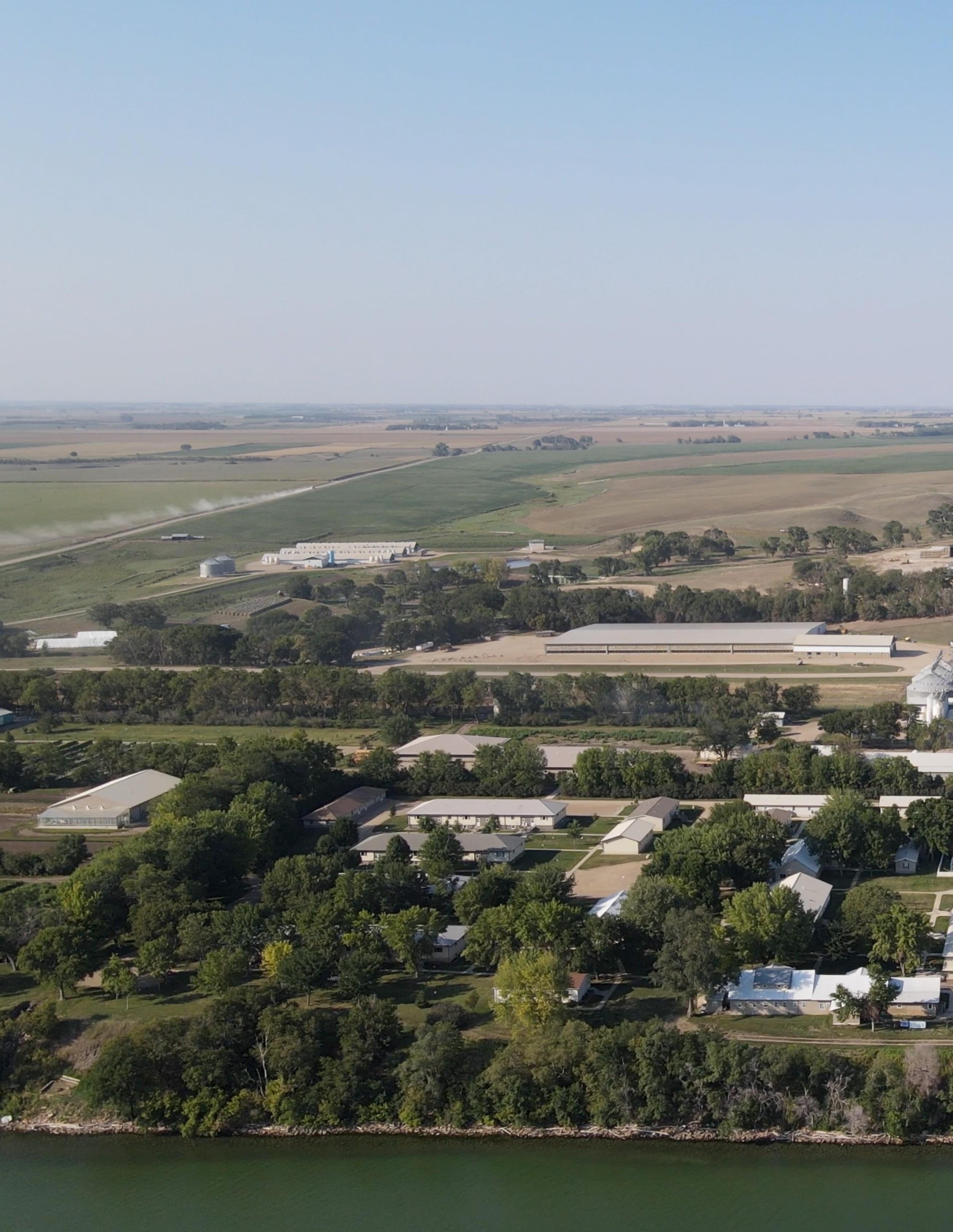
Nestled on the shores of Lewis and Clark Lake and the Missouri River, Bon Homme Colony is the original Hutterite Colony in North America. Through flooding, war, river damming, trials, and drought, Bon Homme has remained the North American cornerstone of the Hutterite people. Every Colony in North America has connections and ties to Bon Homme Colony.
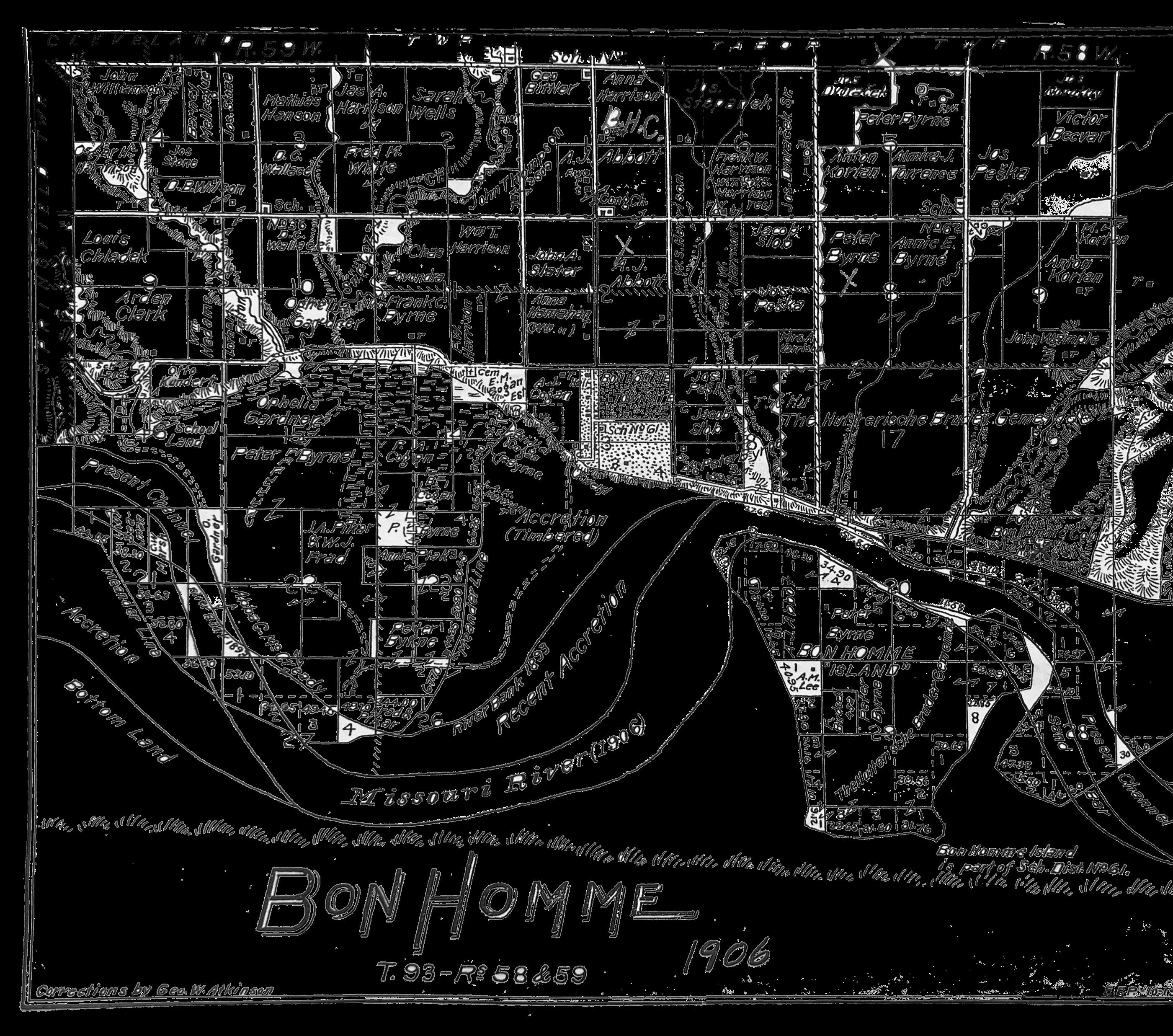
Tim Kurbis and I had the opportunity to visit and tour Bon Homme mid September of 2022. It has been a rough growing season for south central South Dakota, and is currently in a severe drought. Upon pulling up to the facilities, we were greeted by silage cutters and semis hauling for fermentation and cattle fodder. Our guide for the day was Herman Stahl; Herman welcomed us and proceeded to give a complete tour of the grounds. A few weeks later, we were also able to connect with Alvin Stahl, who is Bon Homme's Minister.
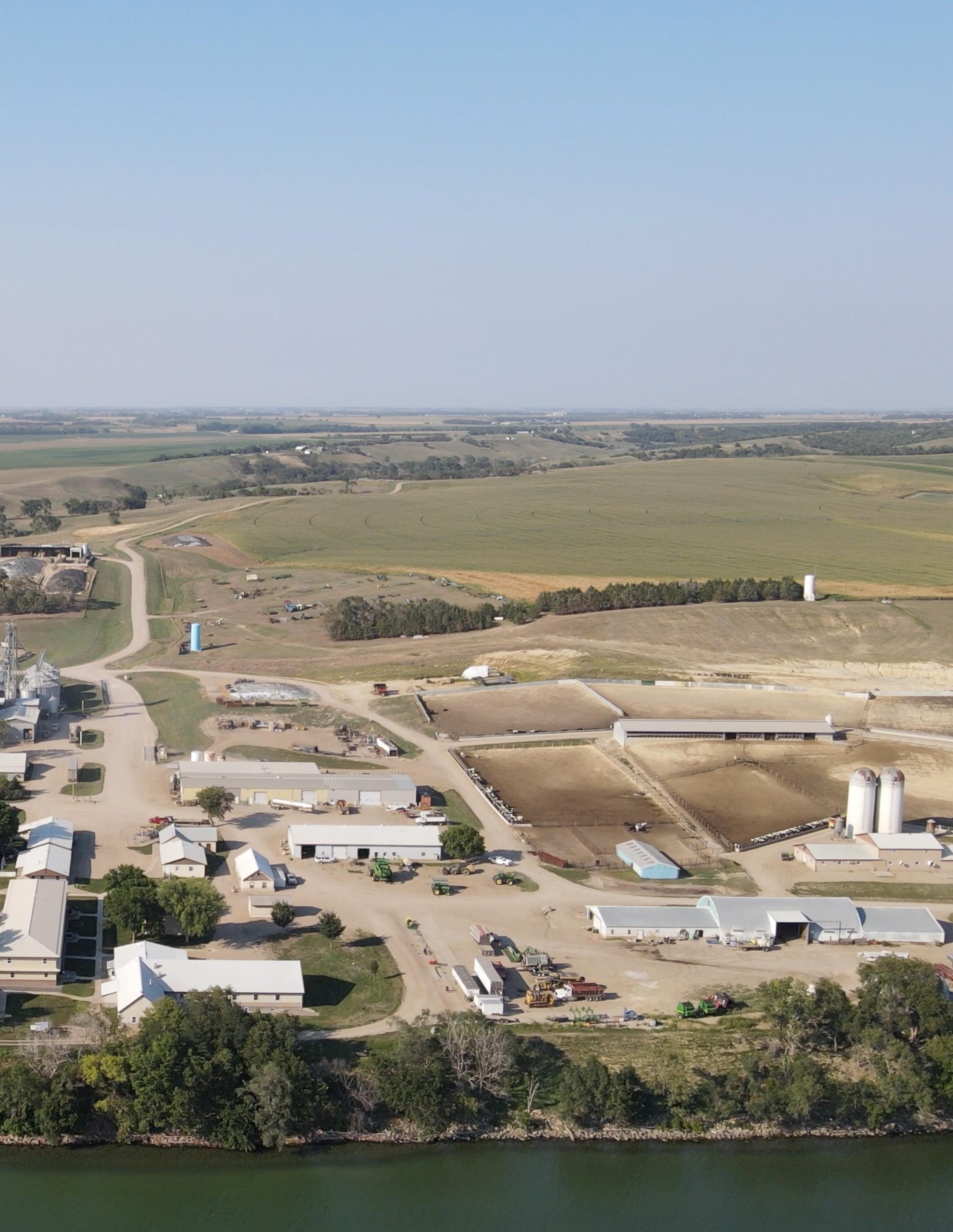
SettlMni At Bon Homme
Bon Homme is located a few miles southwest of Highway 50. Twenty miles west of Yankton, the nearest most populated city of about 14,500 people. Bon Homme Colony was established in 1874. As you'll see, the shape and landscape have changed over the last 148 years, but the Hutterite people have persevered and thrived.
The migration of the Hutterite people was prompted in 1871 when the Russian government decreed that Russian be the language of instruction in all schools. The government also revoked the Hutterite and Mennonites' exemption from military service at that time. Over five years, from 1874-1879, the Hutterites left Russia for the United States.1
The Schmiedeleit (Schmiedeleut), or Smith people Hutterites, were the first of three groups of Hutterites that immigrated to the United States. They journeyed from Russia across the Atlantic, docking in New York. Then made their way towards the West via train ending in Lincoln, Nebraska.
They ultimately settled at Bon Homme County, Dakota Territory. As more families moved, more colonies we established, but Bon Homme was the original. Bon Homme means "goodnatured man" in French. The story goes that a French trader settled and built a trading post on Bon Homme Island. The name goes back to the late 1700s and the story is very interesting. (Follow the link at the end of the story to read more.)
The land was purchased from a government land agent named Walter Burleigh. Walter was a colorful character from the early days of the Dakota Territory. He worked to help get Lincoln elected as president in 1860, and in
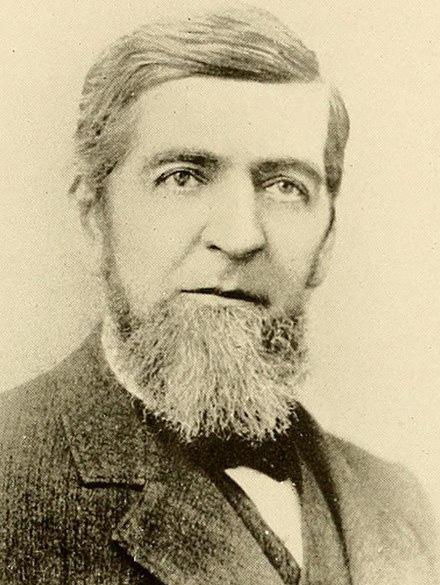
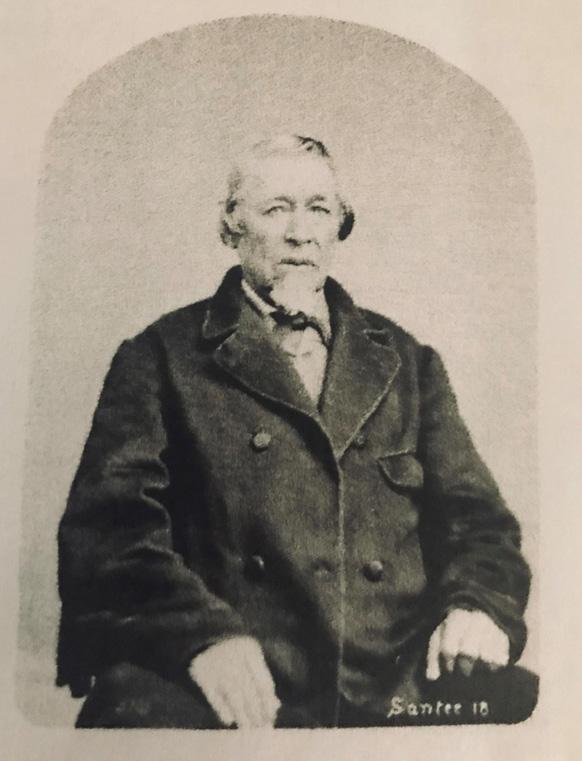
return, he was appointed as an Indian Agent in the Dakota Territory3. The 2,500 acres of land was purchased at $10 per acre. Of the $25,000, records show that $17,000 was a cash payment, and the settlers financed the rest. Hindsight shows this was a very sound investment. Surrounding farmland currently goes for up to $8,000 per acre!
The primary use for the land before the Hutterites' purchase was for trading and some farming. An original building used for trading goods with the Native Americans and early settlers still stands and is in use today. (See photo). The history of trading in the Bon Homme area dates back to 1794 when a French trapper came up the Missouri River and set up the for-mentioned trading post on Bon Homme Island.

Bon Homme Tour
The trading post and the few remaining original buildings on the property are constructed with 12" thick "chalk rock or chalkstone." Chalk rock is a form of limestone and is found on the bluffs surrounding the Missouri River. The sandcolored rectangular blocks are stacked and bonded with mortar. Herman pointed out the original roof line, this building was here upon purchase of the land in 1874, so it's hard to say how old it actually is. Today the building is used as housing for families and has had many additions.

Herman also shared photos of the old cellar initially

built to store all the various canned goods, dried meats, and more. The cellar was built with bricks, partially under a building, and extended beyond the foundation. When the time came to demolish the cellar, since the surrounding building was also being torn down, they figured a few bumps with the excavator would do the trick to cave in the structure. Instead, the old cellar proved so strong they could drive on top without a hint of failure. Ultimately, equipment needed to be moved into the cellar for a successful demo. Folks knew how to build back in the day.
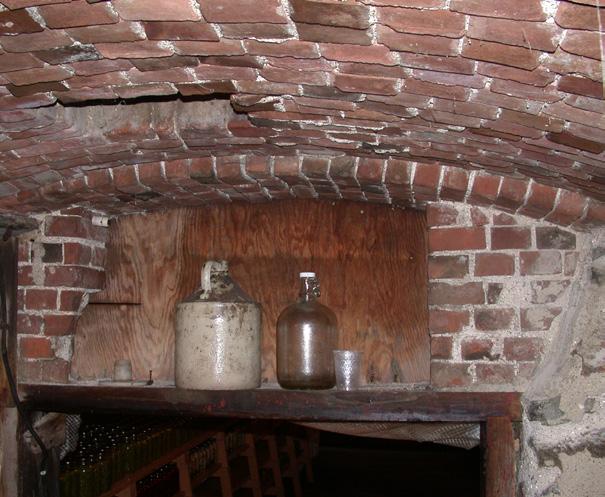
Next, we toured the kitchens, children's dining room, and the main dining room, where communal meals are served daily. The facilities are spotless and well organized, essential for keeping things running smoothly on a Colony this size.
We also toured what is now a carpenter shop and storage building that is also one of the original structures— assembled with the same chalk rock. The interior framing and some original floorboards are most likely cottonwood, which was plentiful along the river. The outside of the building is adorned with old saw blades, including an original stone saw used to shape the chalkstone used for the building. This building, at one time, served as the blacksmith shop, mechanics shop, and more. Outside the shop sits one of the original dinner bells. Like most Colonies, an electronic bell is now used for gathering.

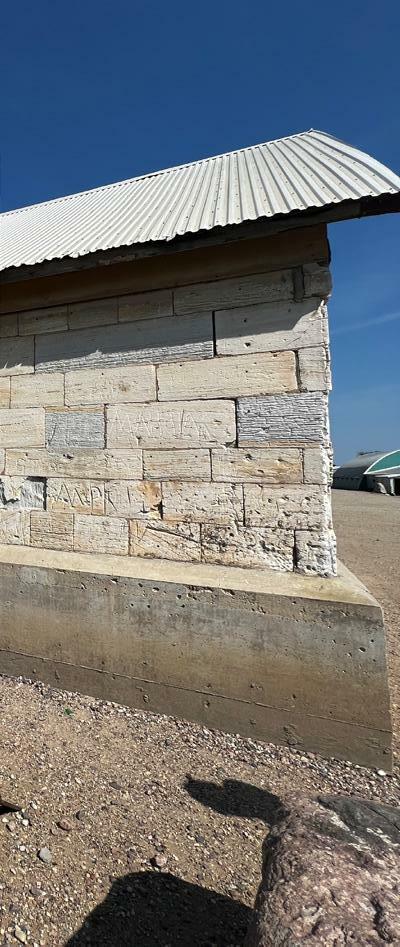
World War 1
The United State's involvement in World War 1 brought some deja vu to the Hutterite people. The United
States began conscripting young men for the war effort. The Selective Service Act was signed into law in 1917 and required all men ages 21-30 to register for military service. The Hutterites, who practice pacifism, came to a new fork in the road, all too familiar with the circumstances that led them to leave Russia in the first place.
The leadership decided to put the land and buildings up for sale, and the Colony would migrate north to Canada, which at the time was welcoming settlers and granting clemency from the war efforts. The sales arrangements were made, and a buyer was in place. However, when the day came to complete the sale, the buyer never showed up. The buyer finally turned up a day or two later, and the Bon Homme leadership informed him they were not selling "A different day, a different deal." No one is sure why this decision was made; Alvin speculates leadership had a vision for the future, and selling wasn't part of the deal. Thankfully, Bon Homme was able to weather conscription and avoided having any men drafted for the war effort. Unfortunately, other sister colonies did not have the same luck; Rockport Colony men were arrested for refusing to enlist.
Dammini
the MMssourM RMver
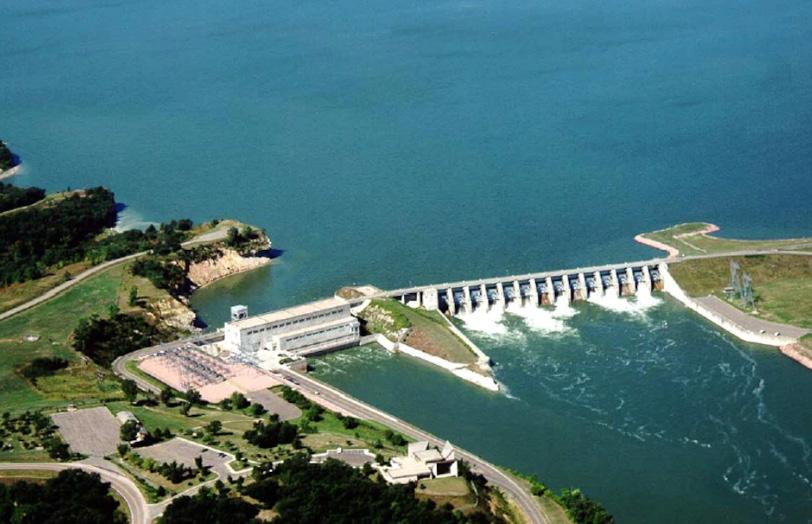
The beginning of our tour began along the top of a wooded bluff. 40-50 feet below are the banks of Lewis and Clark Lake, but this wasn't always the case. The impoundment of Lewis and Clark Lake is a result of the construction of the Gavin's Point Dam located just downstream outside of Yankton, South Dakota.
The original Colony included land and buildings along the banks of the Missouri River below the bluff where the Colony is currently located. An entire island (Bon Homme Island) was situated on the bottom ground. Alvin recalled stories from his Mother about working and living on the island. Buildings on Bon Homme Island included hog barns, a flour mill, and homes. The land was also cultivated and used for crop growing.
Land near Bon Homme Island was used as docking and refueling areas for the constant steamboat traffic. The bottomland was lush with trees which were harvested and used for fuel for the steamboats.

The Missouri River had constantly flooded, and the Colony had to deal with the ebbs and flows of spring flooding and the changing channels of the everrelocating river. In some cases, the river could erode as much as 300 feet of banks, relocate channels over 2000 feet, and deposit vast amounts of silt.


In 1943 a sudden spring thaw released one of the worst floods in the recorded history of the Missouri River. The flooding reached as far as Omaha, leaving the airport under 8 feet of water. The resulting flooding inundated millions of acres of farmland. The flood prompted Congress to pass flood control relief along the river, resulting in the construction of six mainstem dams along the Missouri River.
Gavins Point Dam was started in 1952 and completed in 1957 at the cost of 51 million dollars. It is the smallest of the Pick-Sloan Plan but arguably the most important. Water released from the upper dams is stored in the Lewis and Clark Lake reservoir for hydroelectric power production. The dam controls the flows, enhancing navigation opportunities and minimizing bank erosion. The government purchased the bottom land owned by the Colony at $70 per acre. At the time, losing the ground was a big deal, but removing the risk of future flooding and devastation was probably worth the loss in the long run.
As a result of the dam project, banks along the Colony are now mostly comprised of riprap used to slow and stop erosion from the river. Although the damming of the river and strategic placement of riprap has helped with erosion, it is still an issue; the banks just east of the Colony have significantly receded in the last 50 years.
LMfe at Bon Homme Today
The people of Bon Homme today are thriving. The current population is 47 families with 195 people; larger than the average Colony. When asked why the numbers were higher, Herman responded with the difficulty of acquiring land, as land prices are at all-time highs. The goal is to build a new sister colony as land becomes available.
A challenge the Colony is faces with its current size is, keeping enough work available for the men. Bon Homme is currently assisting neighboring colonies with everything from fabrication and metal work to construction building projects.
Church has gotten a bit cozy as well; no need for heat in the winter and not enough air conditioning for the summer!
FarmMni and AirMculture
Farming and agriculture have been at the heart of Bon Homme since its founding in the late 1800s. Today the foundation remains the same but the scale and technology has advanced greatly.
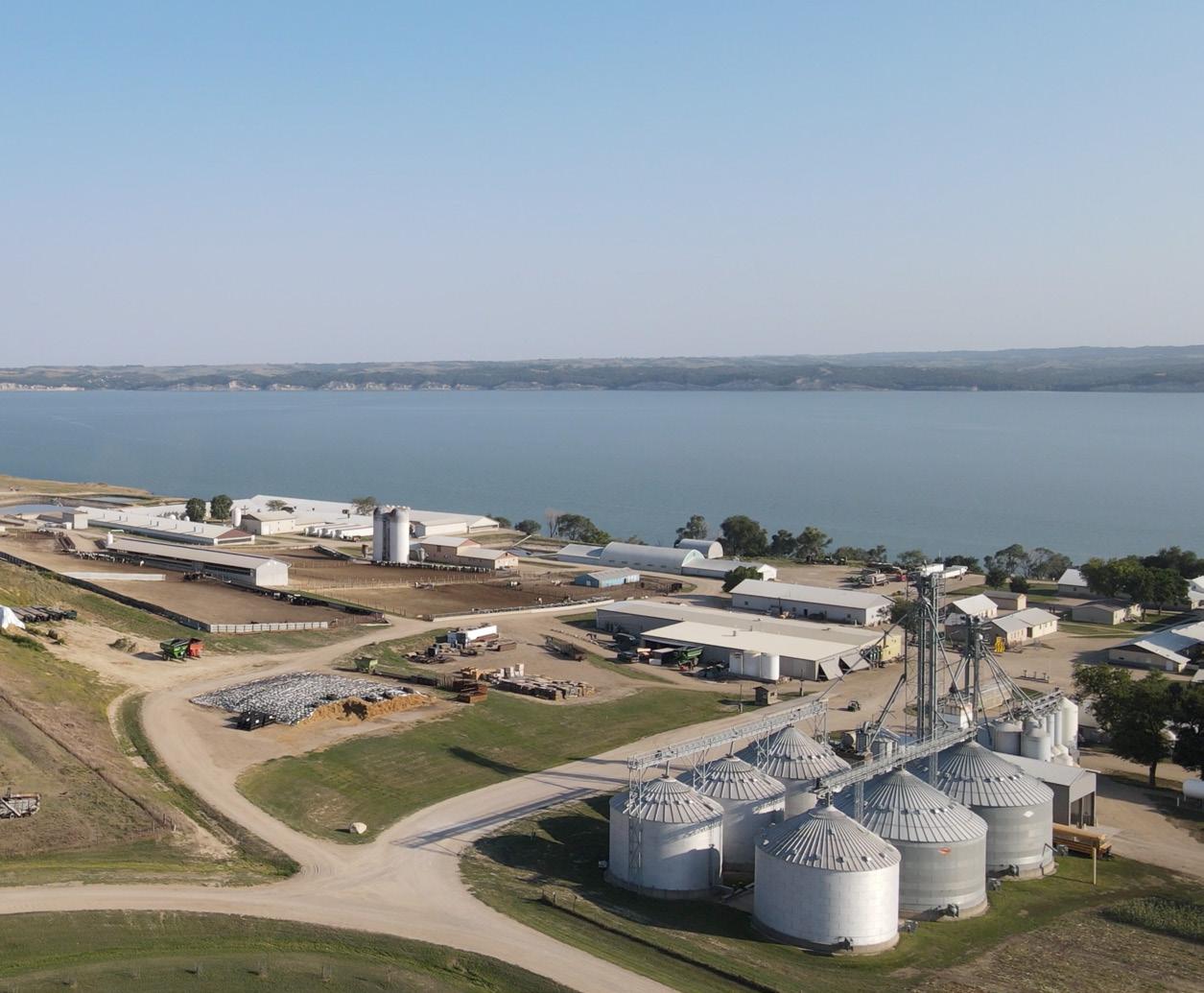
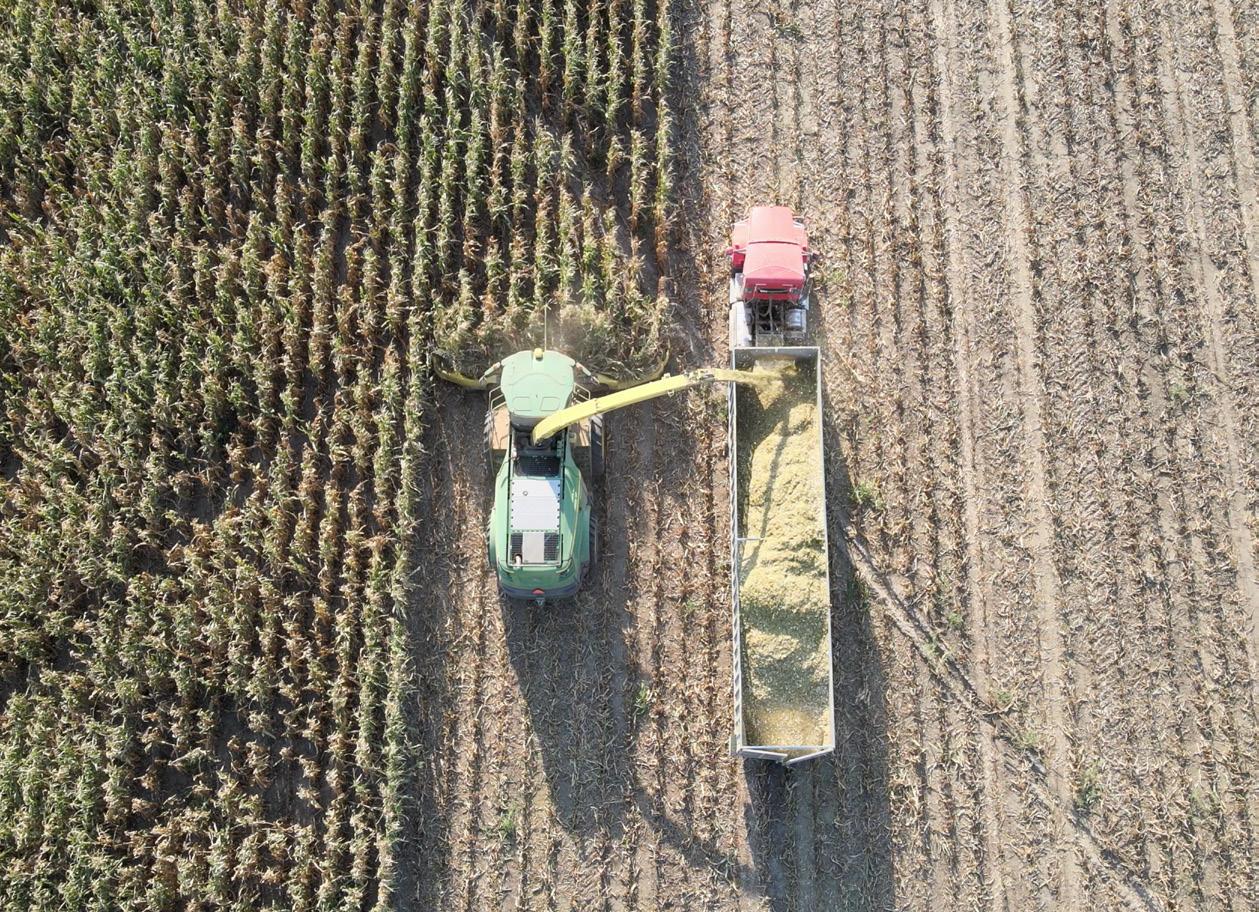
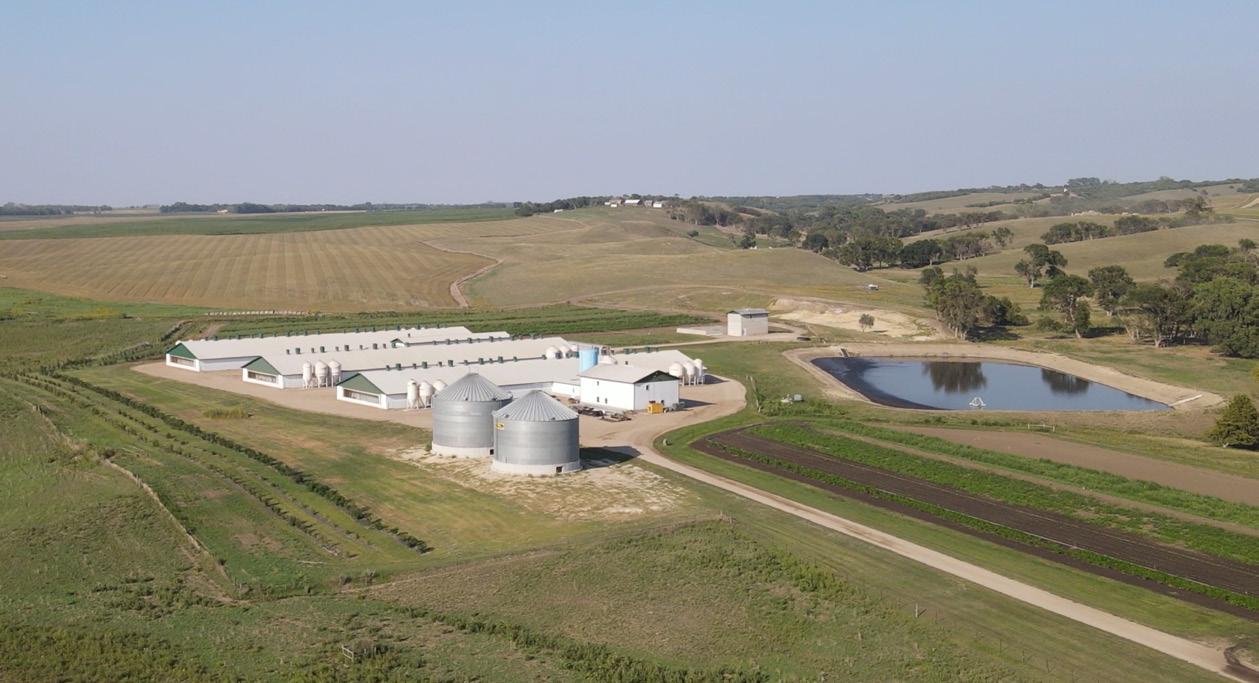
Grain
Bon Homme is farming just over 5,300 acres of land, mainly growing corn and soybeans. The Colony also grows alfalfa and some small areas of other grains, like rye, used for straw. Almost all the grains grown are used to feed and supply the livestock at Bon Homme. During our visit, the signs of a significant drought were pretty clear. As a result, lots of extra corn is being cut and compacted for silage to feed the dairy and beef cows.
Livestock
When it comes to raising animals, Bon Homme just about does it all!
Hogs: Pigs have been part of Bon Homme Colony since the beginning. In 2008 when the pig barns were getting updates, some elders speculated it was the first time Bon Homme was without hogs since the very early days, quite possibly the same lineage of hogs for over 100 years! Currently, it's home to 1,400 hogs farrow to finish.
Beef Cattle: Bon Homme currently has 500 head of beef cattle; they are raised to 850-900 pounds and then sold to feedlots.
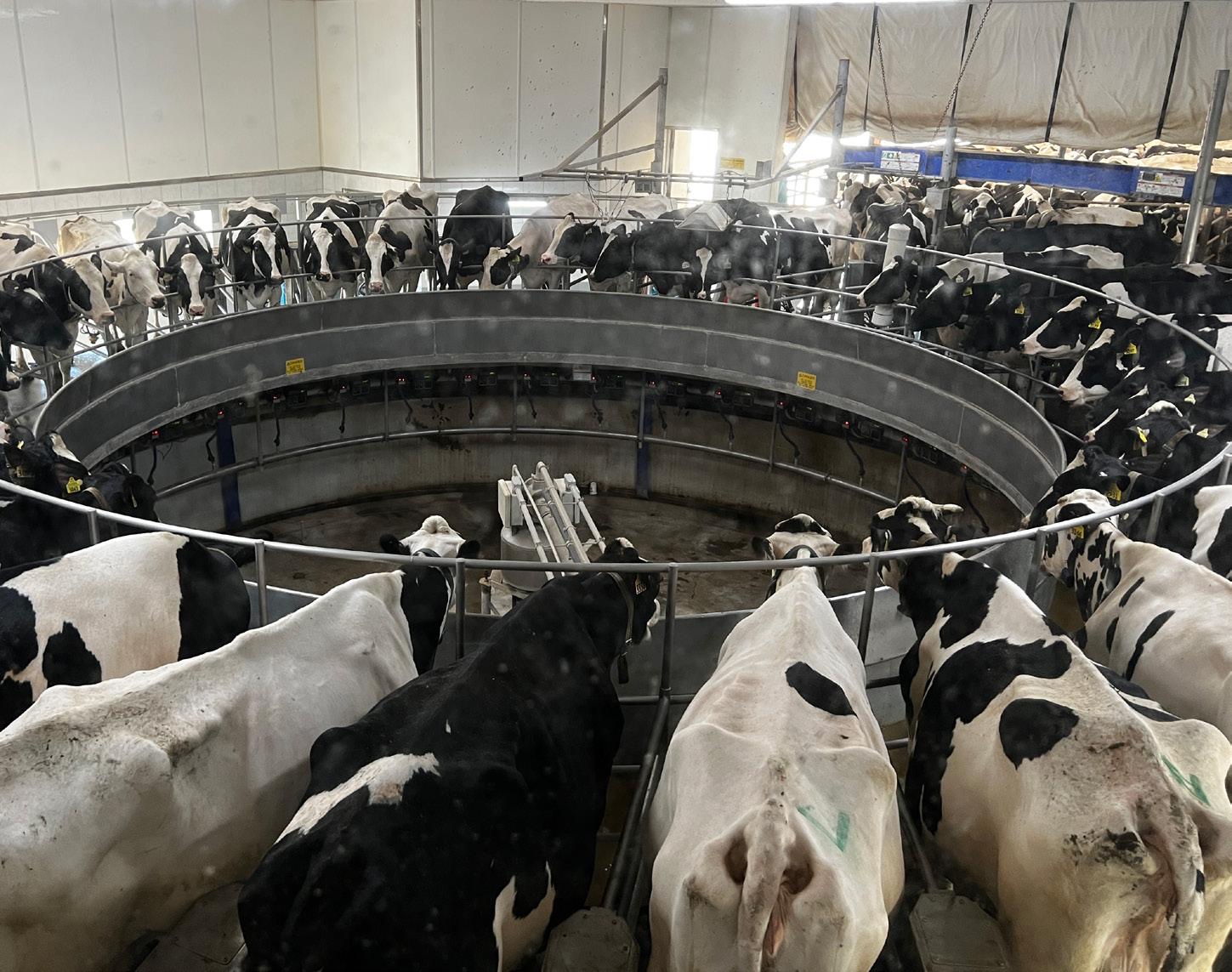

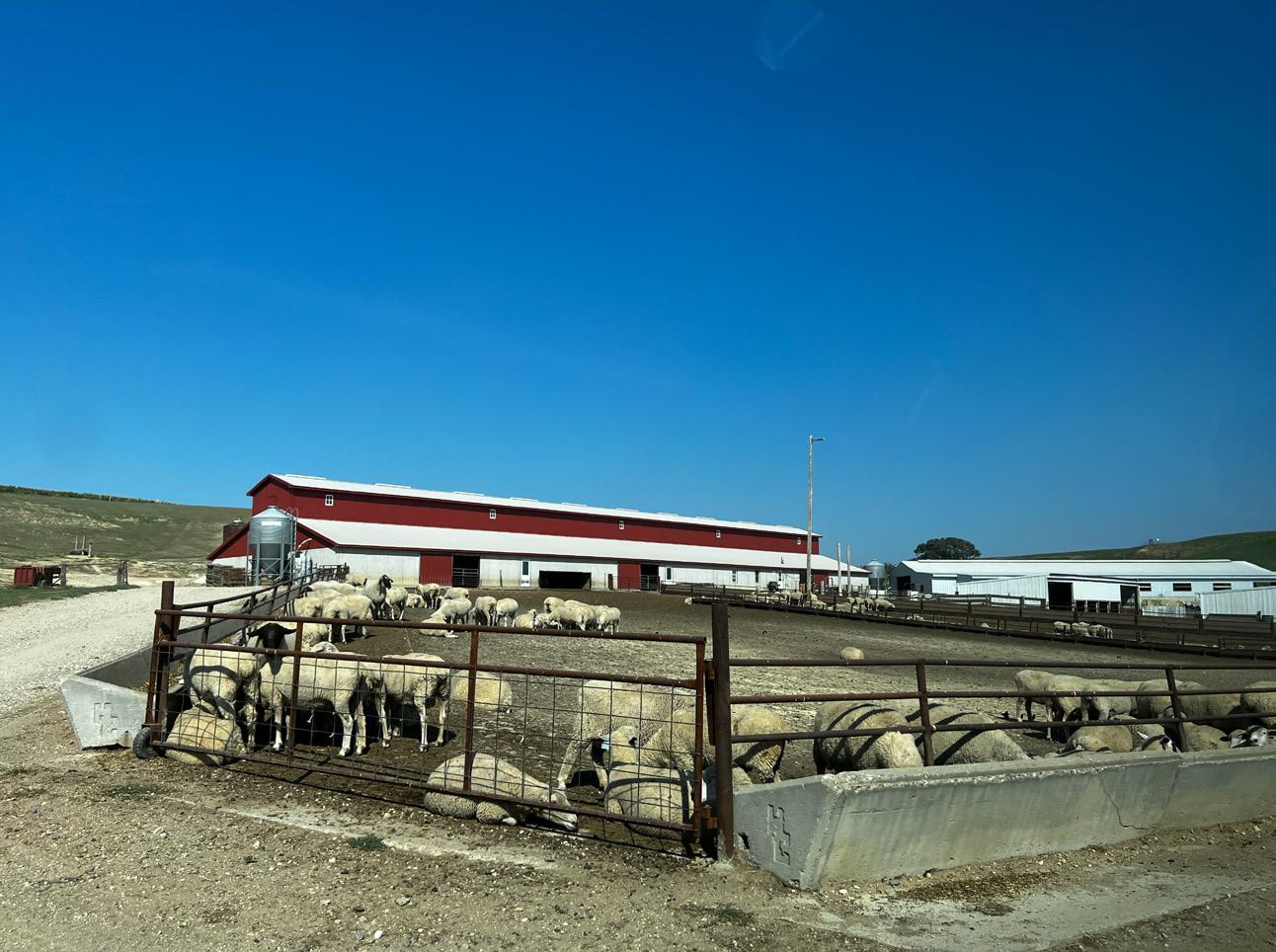
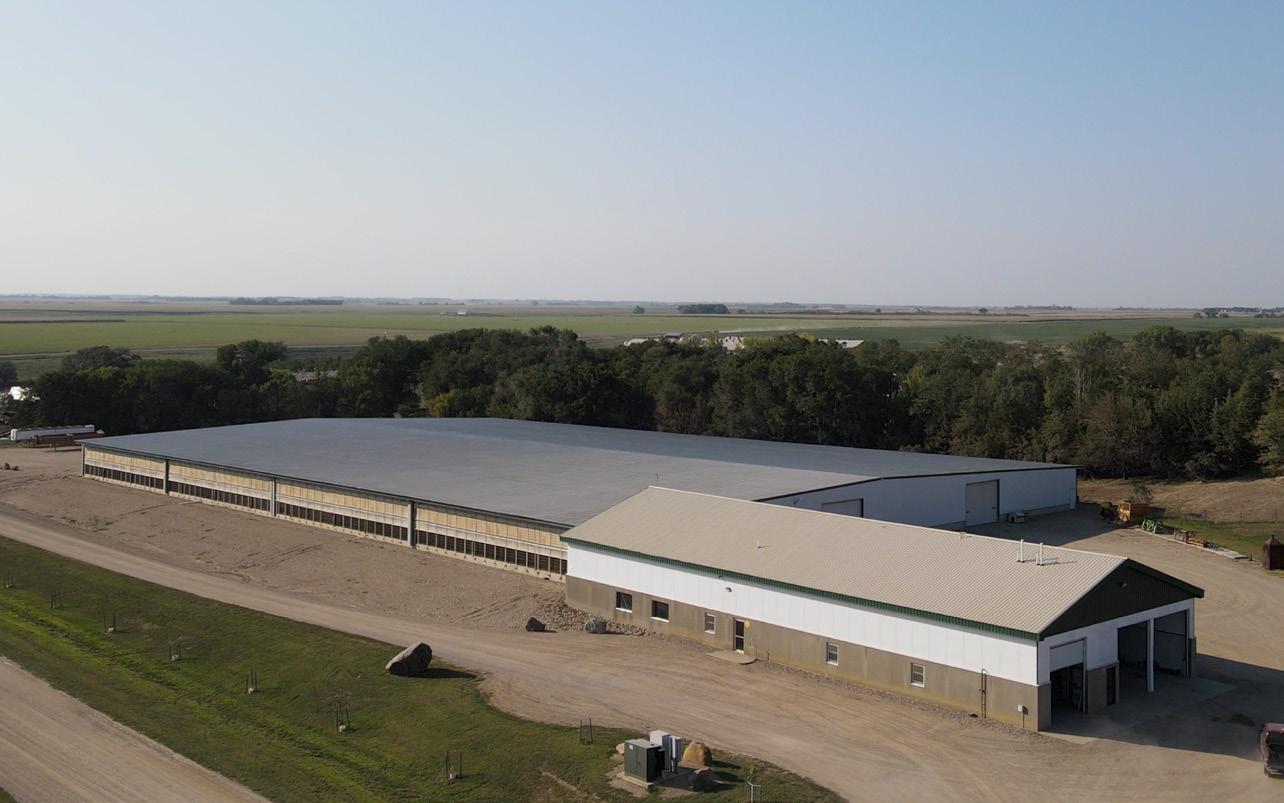
Milking Cows and Dairy: The Colony is home to an impressive dairy operation. The modern facility is set up for milking 350 cows twice a day. Milking happens on a 32-slot carousel. The process is smooth and enjoyable to observe. So entertaining that when they built the milking facility, they were convinced to add a viewing room and window. The idea was a success; as things got up and running, colony members would flock to the room to watch the rotating cows being milked.
Eggs: 600 Layer chickens are onsite and used mainly within the Colony.
Broiler Chickens: The Colony also raises and slaughters around 18,000 broiler chickens each year.
Sheep: Last but not least is the sheep. Bon Homme is home to 1000 ewes. Each sheep is sheared about every nine months. Lambing happens around three times yearly, in April, August, and December.
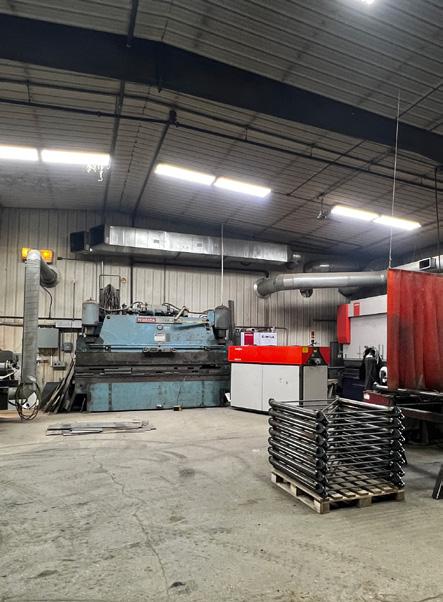
The Garden
Like most Colonies, Bon Homme has an impressive garden. Lush and green, even in a severe drought, the plants benefit from irrigation from the river. The garden has everything you expect, apples, a grape vineyard, and produce for canning and use year around.
The Colony also has a farmer's market available to neighbors during the summer. Anyone can come out and buy eggs, produce, honey, and more.
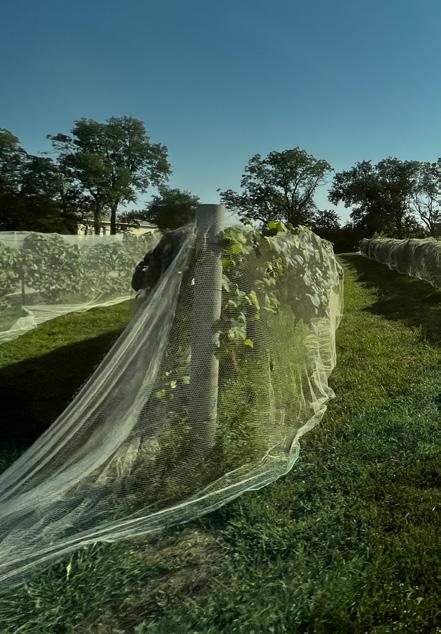
Beyond AirMculture
Bon Homme does more than just farm and raise animals. There is an impressive metal job shop on site. Currently, trailer manufacturing and assembly is the primary source of work.
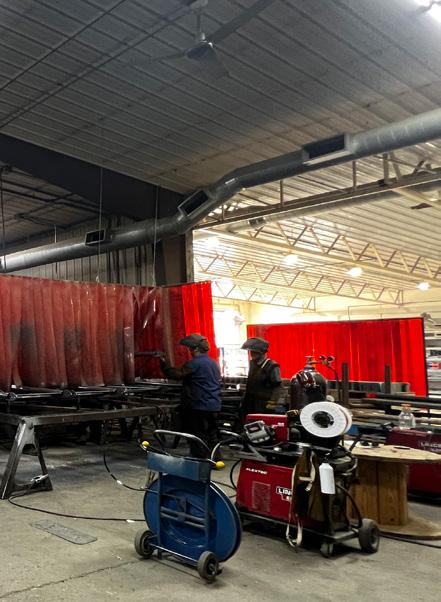
Bon Homme also has an entire construction and carpentry crew. While this is great for keeping up facility and expanding the Colony, it has also been a tremendous blessing for sister colonies. For example, this spring, a neighboring Colony suffered a lot of storm damage. Bon Homme was able to send their crew to help replace a roof and aid in other recovery efforts.
ActMvMties And Other Facts
It should be apparent the people at Bon Homme are not short on things to do. But it's not all work. Being next to such a significant body of water offers some opportunities for fun and adventure. Hiking is a popular activity, and there is no shortage of river banks and bluffs to explore along the Missouri River. Children in the Colony also enjoy fishing when time allows. A good day of fishing will yield some tasty catfish. In the winter months, the lake will freeze over. Kids enjoy sledding and activities on the ice.
HutterMte HMstory Book
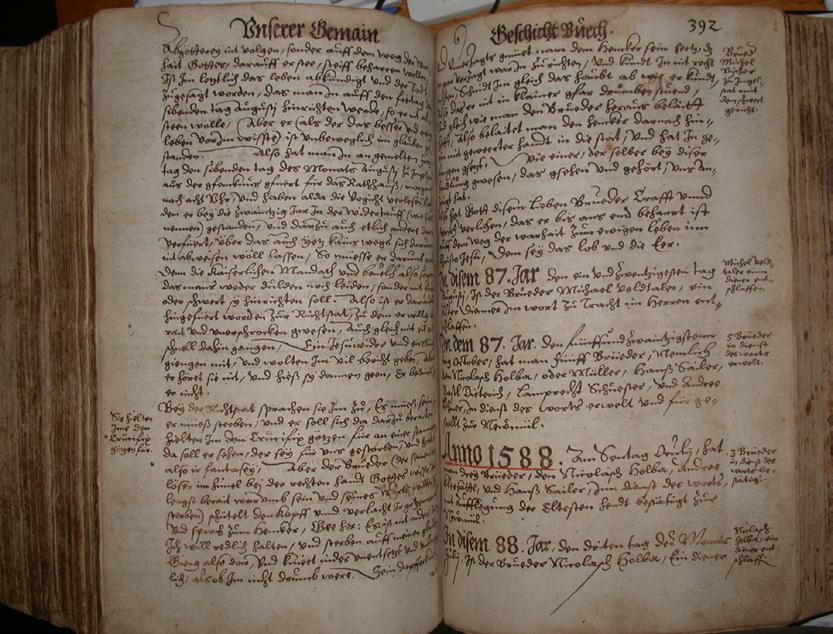
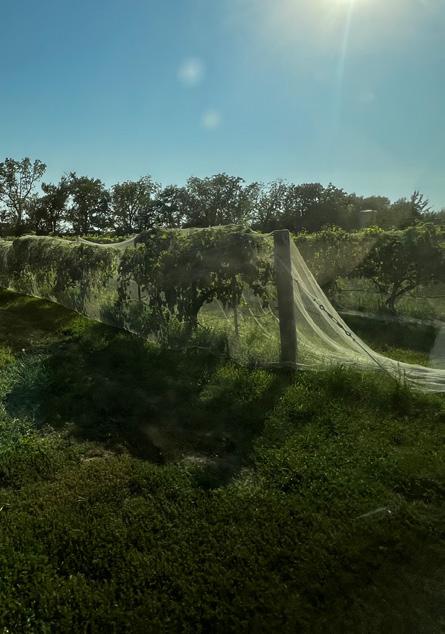
Herman and Alvin also share some images of an incredible book. The book dates back to the 1500s and is full of Hutterite history from the old country: significant events, happenings, moves, persecution accounts, and more. As you browse the book, you can observe the changes in handwriting and styles as the role of the historian passed from person to person. Everything is hand written and illustrated. This heirloom has been documented and digitally archived for future generations. It's incredible the shape and conditions the book is still in today.

If you're interested in history and the Hutterite people, Bon Homme is not short of either. If you're ever in South Eastern South Dakota, I'm sure the folks at Bon Homme will welcome you with open arms and even give you a tour.
Sources and Links
1
https://hutterites.org/history/hutterite-history-overview/ 2
https://www.sdpb.org/blogs/images-of-the-past/the-history-of-bon-homme-county-a-native-perspective/ 3
https://news.prairiepublic.org/show/dakota-datebook-archive/2022-05-29/walter-burleigh. 4
https://www.nwo.usace.army.mil/Missions/Dam-and-Lake-Projects/Missouri-River-Dams/Gavins-Point/
Map by Robert Foley - https://www.sdpb.org/blogs/images-of-the-past/settlement-stories-bon-homme-county/
Answer key on page 42
KIDS COLORING CONTEST
Color this for a chance to win a $25 gift card. Have a parent scan the QR code and submit your entry by March 31st, 2023!
PARENTS: For a Printable Page and to Enter Visit: https://info.newstandard-group.com/ coloring-contest-winter-22-23
Scan to Enter!
DAIRY VENTILATION
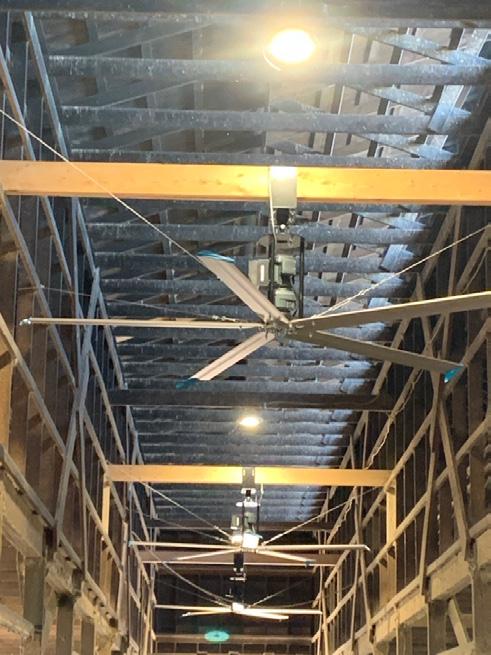 By Ashley Graye
By Ashley Graye
What does a typical ventilation set up look like in a free stall dairy barn? An easy question to ask, but a slightly more difficult one to answer. While Canadian geography has its’ differences, the theme across the country is the same – moving air to provide a better environment for your cows, and your employees. If you do not have sufficient air flowing in and out in a timely manner, then cow comfort, nutrition, and milking method is almost a moot point. When we take the varying climates into account, a better question to ask is ‘What does a typical free stall dairy barn setup look like in each province?’
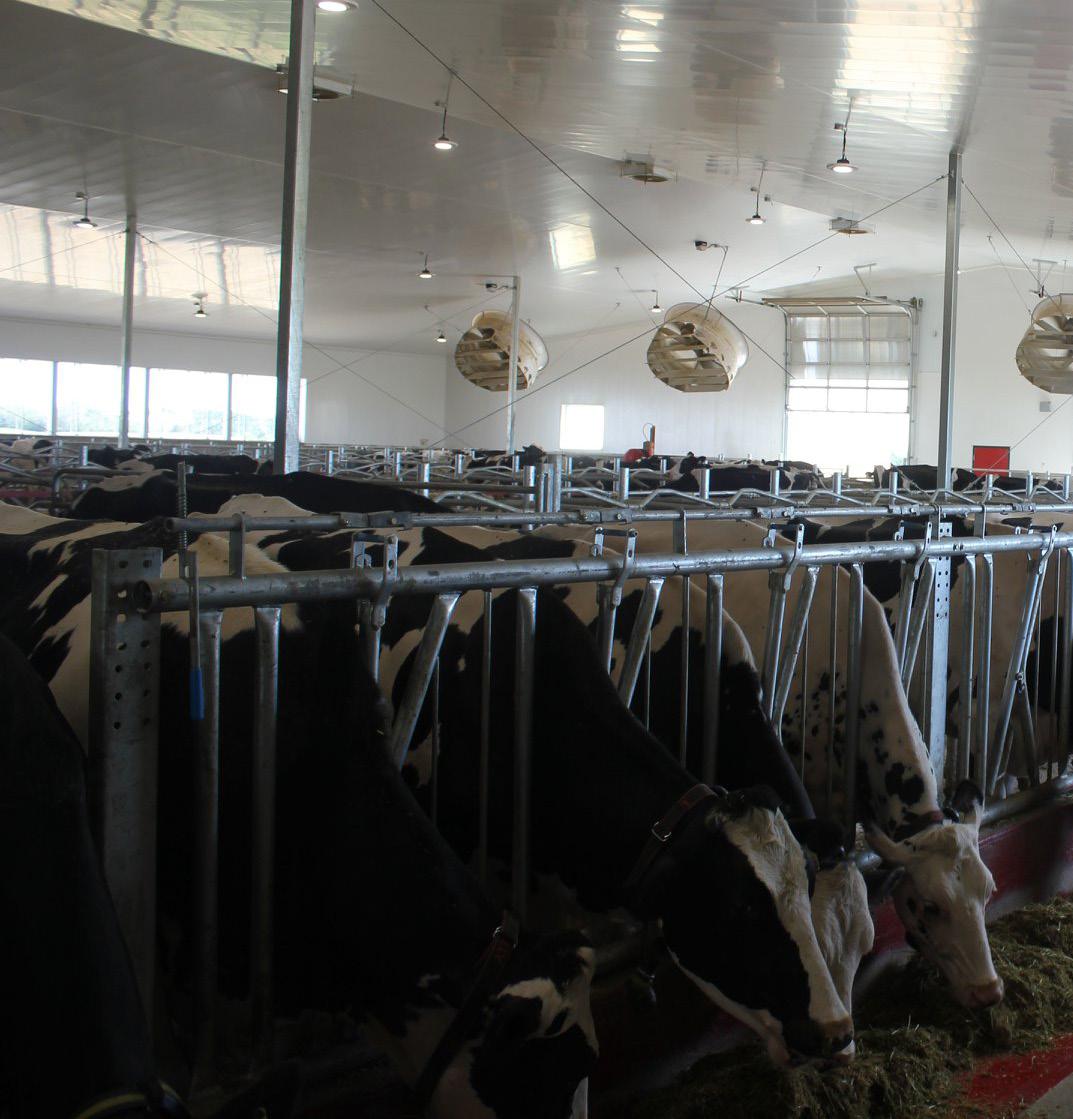
We sat down with dairy experts (Bruce Derksen, Manitoba; Chris Sundby, Saskatchewan; David Numan, Alberta; Fred Meyerink, British Columbia) for a discussion about the differences.
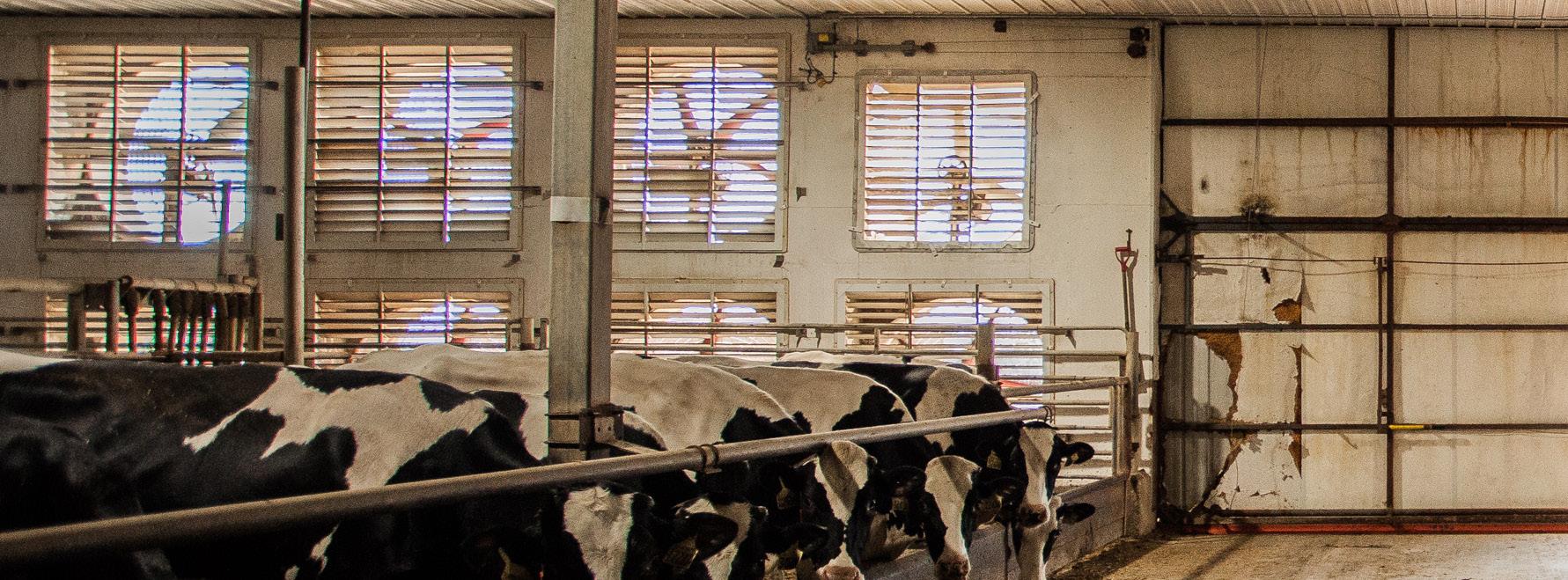
Starting with the most common ventilation system by province, we heard loud and clear that British Columbia relies on natural ventilation for most barns as the climate is much milder than the other parts of the country. The natural ventilation allows for a significant savings in building a barn, but does not mean you should forego fans, curtains and the like. While Alberta experiences much harsher winters than BC, they too rely on natural ventilation in the central part of the province, whereas the southern area tends to favour cross ventilation. Then, the prairies – the harshest of climates for dairy barns in Canada. Temperatures in Saskatchewan
and Manitoba experience a swing from -30C to +30C, and beyond once you factor in windchills and humidity. Tunnel ventilation is the norm in these provinces, apart from central Saskatchewan, which like Alberta, relies on Natural Ventilation. So, we have natural, cross and tunnel ventilation. Each provides significant benefits, but also faces their own challenges. Most of these challenges can be remedied by ensuring you have enough air movement in the barn. In the summer, aiming for an air exchange of at least once a minute is ideal. Using stir fans and curtains in a naturally ventilated barn will help mix your air (be cautious it’s not just pushing your air). A cross ventilated barn will need to lean on baffles to push air down to the cows, as the fans push outside air across the barn. And then there’s tunnel ventilation – having enough fans (that are large enough), as well as actuated inlets to allow for a full tunnel system or opening the top for a vented format will allow you more control than relying on overhead doors.
When the colder months approach across the prairies, you can dial down the air exchanges to every couple minutes, finding the delicate balance between reducing/removing condensation to minimize fog, but not introducing too much cold air that your equipment is susceptible to freezing. A contributing factor to freezing that is commonly overlooked, is the number of animals in each space. If you are typically milking 200 cows, but only have 160 in the dead of winter,
you will need to adjust your heating accordingly. At that number, you are down 20% of your natural heating elements, and must make up for it with supplemental heat sources. In British Columbia, however, the concern over the winter months is keeping on top of the moisture the rain introduces. Ensuring a dry, warm barn keeps the pneumonia away and the employees comfortable.
While many of these considerations are applicable to both robotic and parlour milking barns, there are special considerations to take on both sides.

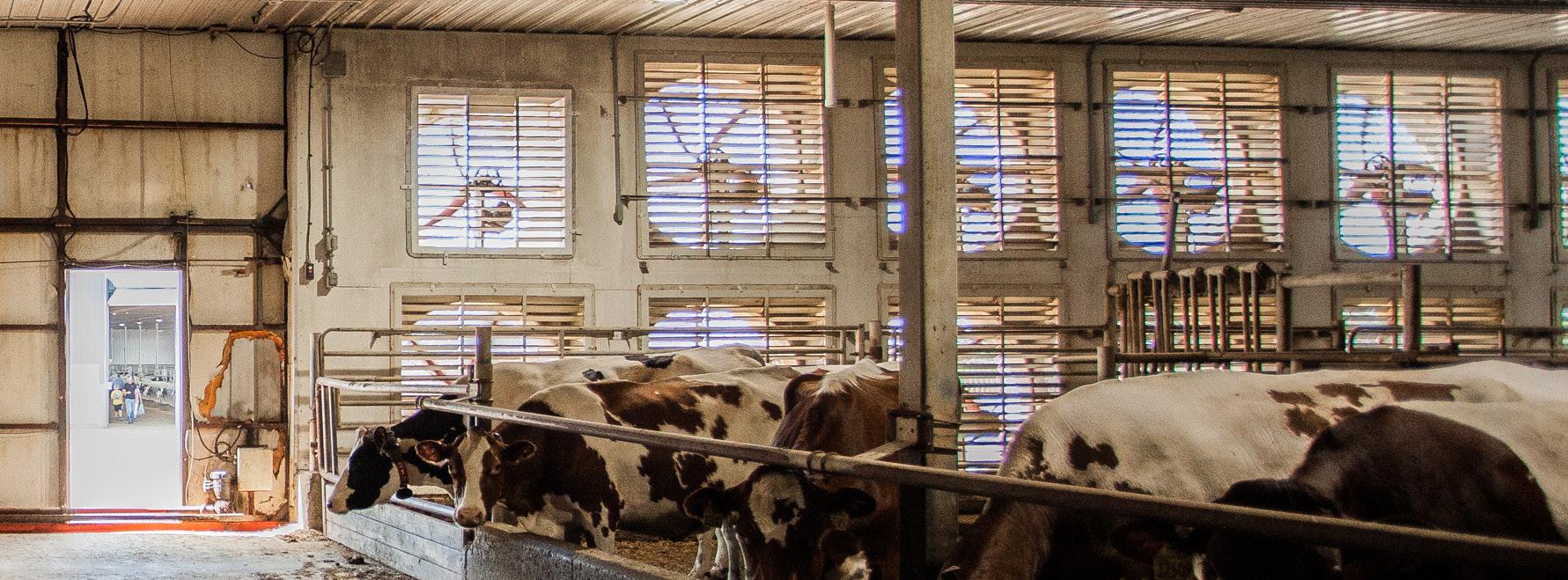
When milking with robots in colder climates, ensure you have sufficient heat around the robot (enclosed room are not always necessary). If you’re milking via parlour, there are certain design aspects like holding areas, branches, offshoots and ‘dungeon style’ rooms that require additional ventilation. When we look at large holding areas and return alleys, stir/ push fans and curtains will need to be added to prevent flies or stagnant air. When we look to the actual parlour area, misters can be added here not only to keep the cows cool,

but to keep the employees cool. Be mindful of intermittent scheduling for this, as you do not want anyone (cows or humans!) getting a chill in the winter months.
A common thought in all provinces during the height of summer is to avoid misting systems in most barns. Not only do you have to decrease your air movement, which encourages flies, they tend to encourage crowding below the misting, which increases heat stress. In severe cases, misting can encourage pneumonia as well. However, it has its’ place. Strategic placement over the feed bunk is about the only recommended place for misters, and at that it’s recommended to run them for 1 minute on / 5 minutes off.
As you can see, there are not a vast amount of differences. The common goal is to ensure you have sufficient air exchanges in both winter and summer, the only difference really, is how that looks. When you really simplify the differences, it can be summed up in ventilation styles –natural vs tunnel. Now, calf barns are another story, but that’s also a story for another issue.

YEAR-END FARM FINANCIAL PLANNING


Another year has come and gone. The crop is in the bin, the hay is in the barn, and the cows are home. You may be thinking it’s time to relax. However, much of the operation’s most important and impactful work is still ahead before year-end. Just like the equipment gets cleaned up, repaired, and maintained, the same time and care needs to be given to the farm’s year-end financial planning. Your farm’s year-end financial planning may include accounting and tax planning, accrual and balance sheet analysis, financial advisor and lender meetings, business risk identification and planning, and succession and estate planning.
Accounting: The foundation to the farm’s year-end financial planning is having the farm’s accounting records up to date and correct. Without this information, the operation can’t move on to the next steps. Ensure that all transactional data is inputted and reconciled, gather all equipment purchase and sale documentation, livestock sale records, and any other items you regularly provide to your CPA. Contact your accounting firm and get your books in order.
Tax Planning: Once your accounting records are in order, schedule a time with your CPA to create a year-end tax plan. Farms have tremendous flexibility in the way they report taxable income, which makes this meeting so valuable. The role of the CPA in this situation is to maximize tax efficiency while considering its effects on the farm’s cash flow, balance sheet, and business needs. The farm makes an amount of income over a course of years based on its operations, but the way that income is reported over the years on the tax returns can have a dramatic effect on the tax cost of that income. Tax reporting for the farm can be complicated as
in most cases there is a three-year overlap of operations reported in the same year. Because of this, the tax planning process should be taken with care and consideration. Your farm’s CPA should have a grip on the farm’s accrual basis income, working capital position, expected capital asset purchases, and other significant business plans in order to come up with an effective tax plan. Anyone can advise on how to lower taxable income on the farm on a particular year, but there are few that can put together a comprehensive plan that considers and optimizes the whole financial picture of the farm. Consider inviting your lender and marketing advisor to participate in this meeting to help everyone gain a holistic view of the farm. Tax planning is a high return on investment job on the farm.
Accrual Analysis: After taking care of the ABCs for the farm’s accounting, accrual analysis can be completed to take your farm’s utilization of its financial data to the next level. Accrual basis income will tell you how much money the farm made or lost in a given year. Because of farming’s unique production and cash flow cycles, this can be a tough number to understand without accrual analysis. Despite its benefits, very few farms track profits and losses on an accrual basis so by doing so your operation will gain a competitive advantage. Accrual analysis allows the farm to analyze the actual financial health of the operation as profitability and ratio analysis can be completed. Different ratios will be important to the farm based on where it’s at in its financial

journey. The important metrics to a business are referred to as Key Performance Indicators (KPIs). There are many farm financial ratios out there, but choosing 3-5 key ratios or KPIs for your farm will provide the highest return on your analysis by not getting in the weeds which can easily happen in ratio analysis. Tracking profitability, working capital position as a percent of expenses, revenues, and per acre, and the debt service coverage ratio will serve most farms well. These three combined will tell the operation if it’s making or losing money (profitability), its ability to absorb a tough year and capture future opportunities (working capital position), and if it’s creating enough cash flow to support the amount of leverage in the operation (debt service coverage ratio). To sum it up, they provide the operation with the information of whether it can sustain and continue to farm year after year. Mature operations may focus on other metrics such as return on equity, return on assets, true economic profit by assigning a fair market rent charge to their owned land, or to analyze their working capital to give them information on how much money they can distribute out of the farming operation. The important thing is to start with a few key ratios that matter to your farm. It may sound complicated, but this analysis
simplifies the way you can look at the farm’s finances.
Lender Meeting: The year-end bank meeting is a meeting that can either cause a lot of stress for an operation or be another opportunity to strengthen its relationship with its lender. An important question for you to consider in your lending relationship is whether you are working for the bank or is the bank working for you? The answer to that question will determine whether you are a desirable borrower for the bank. Being proactive in your communication with your lender and by providing solid information through accounting records, completed accrual analysis, and having a tax plan will greatly increase your odds of having a successful borrower-lender relationship, which will help create additional opportunities for the operation.
Financial Advisor: After working through the nuts and bolts of the farm’s accounting and finances, take time to schedule a meeting with your financial advisor. Many farmers don’t have financial assets invested outside the farm, but there are benefits to diversifying your wealth through offfarm investments. Starting to build these assets early in life
For nearly 40 years, ELO CPAs & Advisors has been a leading agri-business accounting firm with an emphasis on all facets of agricultural operations. Agriculture is so important to ELO, they have a complete practice focused solely on Agriculture and Agri-business.
ELO has been helping farmers and their operations throughout the region to protect, maintain and grow their operations. From accounting and business advisory to wealth management and succession/estate planning, we will make sure you feel at home every step of the way. Join the generations of farmers that have relied on ELO to be their trusted source for all things Agriculture.
To visit with one of our Agri-business Advisors, please contact us at elocpa.com, or call (605) 996-7717.
helps to provide another income stream in retirement, and it will aid in the succession of the farm. There are many taxadvantaged savings vehicles to use such as IRAs, SEP IRAs, 401(k) plans, and defined benefit plans that lower taxable income and provide tax sheltered growth. Also review if you have adequate levels of life insurance and if you have a right mix of term and whole life to fulfill your goals. Dr. David Kohl, professor of Agricultural Finance at Virginia Tech, suggests that farmers should be planning to have 50% of their retirement income to come from off-farm investments. This diversification of assets creates security for the retiring generation and opportunity for the incoming generation.
Risk Identification & Planning: What things cause you to lay awake at night and lose sleep? Take some time to list out the risks that effect your farm and put them into two categories: ones that you can control and ones that are out of your control. Doing this will provide clarity on steps you can take to reduce risk in your farm. Some financial risk questions to ask and address are: Do you know where the farm’s finances will be if the farm has the worst possible year next year? Does the farm have enough working capital in place to absorb that set back? If not, is there something you can do right now to raise working capital and is there a plan in place with your lender if that scenario does take place? Does your operation have a marketing plan in place to secure the revenue it needs to continue? Your operation also has management risk to deal with as the risks to your business stem farther than just direct financial risks. What happens if the main decision maker gets hit by a bus? Are there proper legal, succession, and estate plans in place for the farm to continue? Are there documented policies and procedures in place for the duties carried out by the main manager or is everything in “their head”? Is there someone else in the operation that understands the interworking’s of the farm? Are you taking care of your health and mental well-being so
ANSWER KEY
you can carry out your duties in the farm? Farming is a risky business, making it critically important to reduce the risks that are within your control.
Succession and Estate Planning: Risk identification and planning may identify that the farm has gaps in its succession and estate plan. These plans take time to develop so it’s critical to not delay the process. If you do have a plan in place, when was the last time you addressed and reviewed if there are any additions or changes that should be made? Succession and estate planning often get lumped into the same bucket, but it’s important to note that they are two different processes that require different planning. Succession planning is the process of transferring over management responsibilities and possibly ownership percentage in the farm operating entity during life while estate planning is the transfer of assets. Assembling your team of advisors and starting the conversation early is the key to success. It’s important to assemble a team that not only understands the technical tools such as entity structure, gifting, estate and tax laws, but a team that understands the complexity of the human elements that are at play in a farm succession plan. Understanding the human and relationship dynamics at play within the plan is what will ultimately make or break the tools that get used to carry out the succession. Work with advisors that are willing to listen, ask good questions, and gain an understanding of the ultimate end goal of the farm before formulating a plan to get there.
Year-end planning involves many tasks that need to be given the same care as other jobs on the farm because they can truly make or break all the work you have done on the farm for the year. This is the perfect time to work on the business. Treat your farm like a business and it will pay dividends for yourself and generations to come.
We Build Farms.
Penner Farm Services is a leading provider of livestock equipment, supplies, and services. Since 1956, livestock producers have relied on Penner Farm Services to provide their entire scope of automated equipment for efficient farm management. Locations: Blumenort, MB, Lacombe, AB, Lethbridge, AB, Thunder Bay, ON
Head Office: Winnipeg MB
Locations: British Columbia, Alberta, Saskatchewan, Manitoba, Ontario
Western Ag Systems established in 2005, has a strong following with the Hutterite Brethren community within the prairies. While their focus has largely been Hog, Grain and Poultry, since joining AgriHub they have expanded to serve the Dairy industry as well with Lely Automated solutions. Locations: Swift Current, SK Saskatoon, SK
AgriHub is a leading edge group of companies supplying the Agriculture industry with Projects, Advisorry Services, Equipment and Consumables across Western Canada.
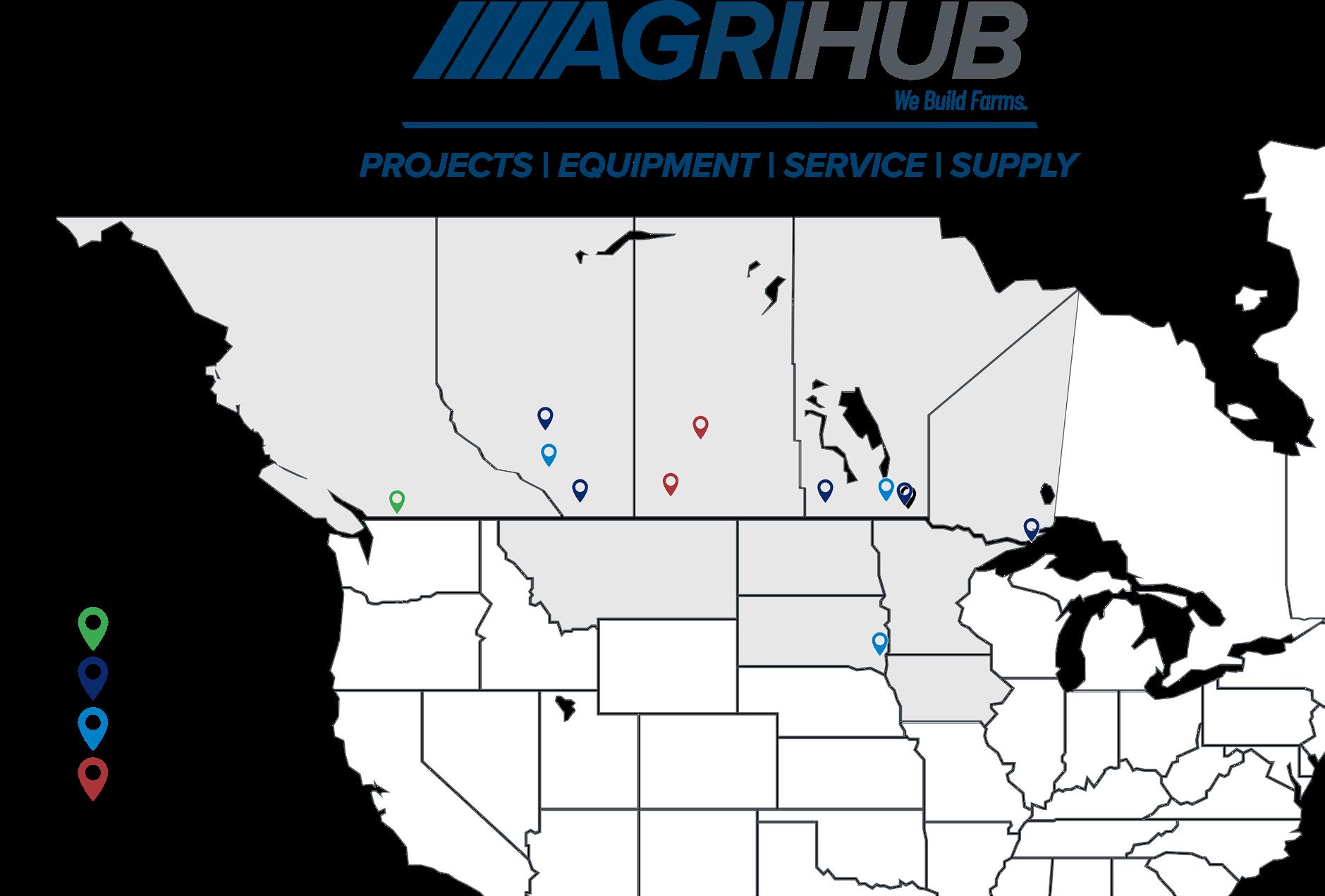
WHO WE ARE
United Agri Systems is a prominent name in the Poultry industry, setting standards for Poultry houses, controls, ventilation and more. Established in 1998, they are a well respected and pivotal partner in poultry, grain and dairy. Locations: Abbotsford, BC
Penner Farm Services is a leading provider of livestock equipment, supplies, and services. Since 1956, Livestock producers have relied on Penner Farm Services to provide their entire scope of automated equipment for efficient farm management.
New Standard Ag was founded in 2006 in Manitoba, Canada, setting the industry standard for group housing within the Hog sector. Since then, they have expanded into poultry, becoming the trusted providers to Hutterite Colonies in both Canada and the United States. Locations: Winnipeg, MB, Sioux Falls, SD, Brandon, MB
Locations: Blumenort, Brandon, Lacombe, Lethbridge, Thunder Bay
Western Ag Systems established in 2005, has a strong following with the Hutterite Bretherin community within the prairies. While their focus has largely been Hog, Grain and Poultry, since joining AgriHub they have expanded to serve the Dairy industry as well with Lely Automated solutions.
Palmlite Industrial Services, established in 2012, offers a wide selection of generators, transfer switches, pumps and electric motors for industrial, commercial, and agricultural applications as well as residential solutions for home and cottage owners. Locations: Blumenort, MB
Locations: Swift Current, Saskatoon
United Agri Systems is a prominent name in the Poultry industry, setting standards for Poultry houses, controls, ventilation and more. Established in 1998, they are a well respected and pivotal partner in poultry, grain and dairy.
Locations: Abbotsford
Horizon Livestock & Poultry Supply Since 1996, Horizon Livestock & Poultry Supply has provided quality products and services to the local agricultural industry. Our experienced and knowledgeable staff partner with you to select the best product lines to maximize animal care, operating efficiency, and return on investment.
New Standard Ag was founded in 2006 in Manitoba, Canada, setting the industry standard for group housing within the Hog sector. Since then, they have expanded into poultry, becoming the trusted providers to Hutterite Colonies in both Canada and the United States.
Locations: Steinbach, MB
Locations: Abbotsford
Palmlite Industrial Services, established in 2012, offers a wide selection of generators, transfer switches, pumps and electric motors for industrial, commercial, and agricultural applications as well as residential solutions for home and cottage owners.
Dundas Agri Systems Is an established, family owned, and operated company launched in 1981 to serve Dairy Producers of Eastern Ontario. As a prominent provider of Lely and Boumatic systems, and well-regarded expert in milking, DAS currently is privileged to serve over 250 dairy farms in the Eastern Ontario region.
Locations: Blumenort
Locations: Brinston, ON
Horizon Livestock & Poultry Supply Since 1996, Horizon Livestock & Poultry Supply has provided quality products and services to the local agricultural industry. Our experienced and knowledgeable staff partner with you to select the best product lines to maximize animal care, operating efficiency, and return on investment.
Locations: Steinbach
We Build Farms.
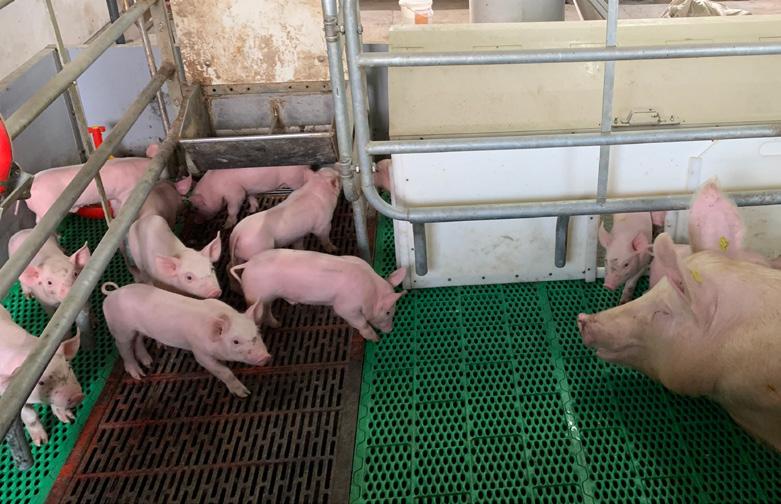
From concept through production, our experienced team of agriculture experts are there for you. We have built a legacy of knowledge and reputation by helping producers run an efficient operation, first by understanding your business, then providing you with state-of-the-art system design, durable equipment, reliable service, and supply.
